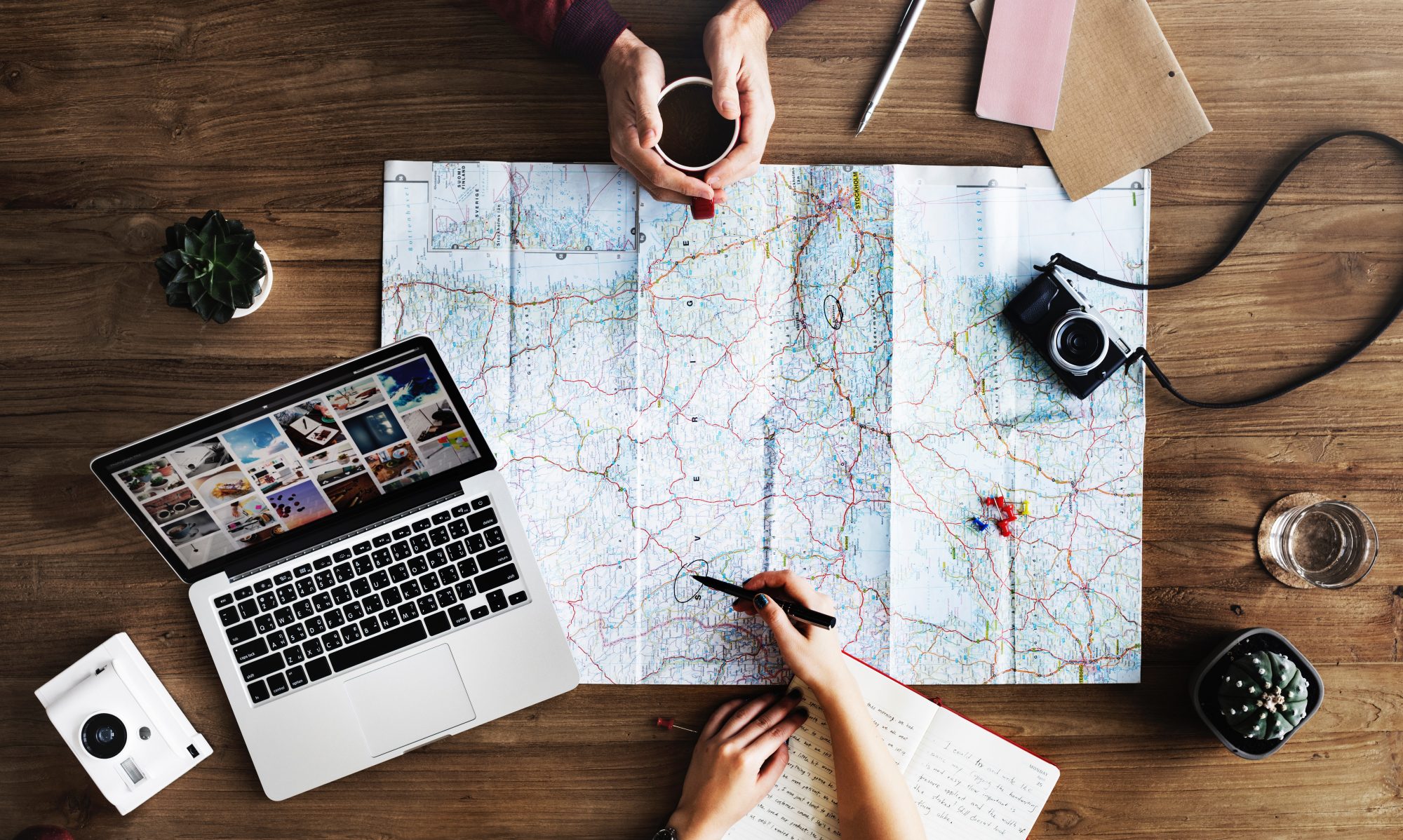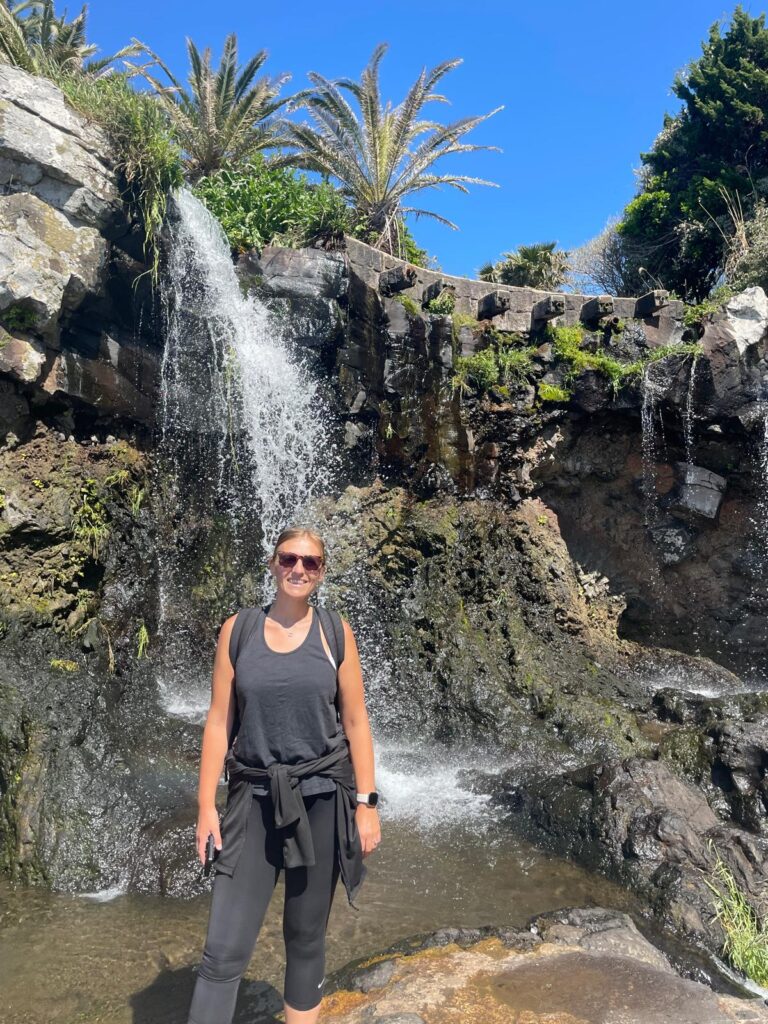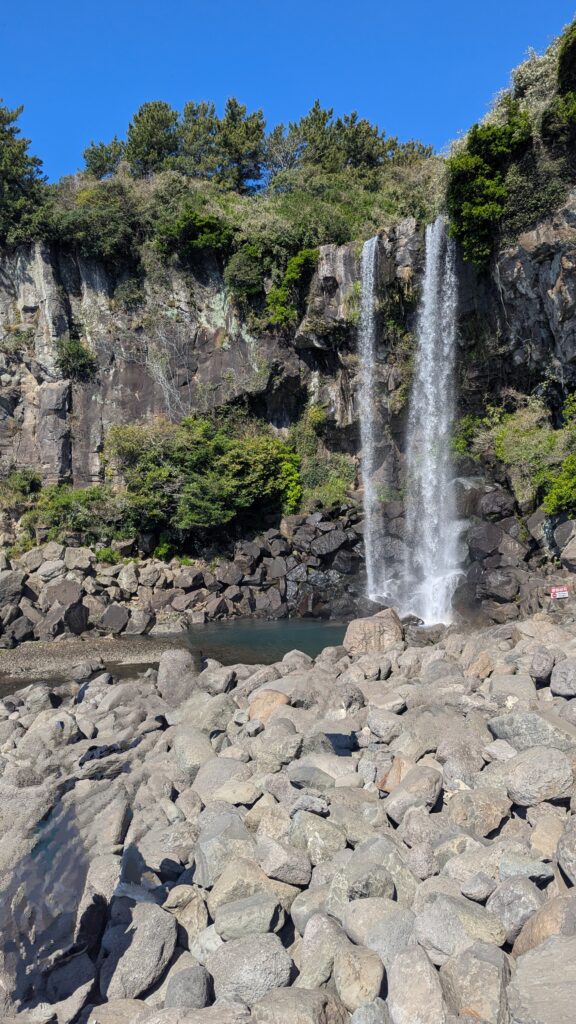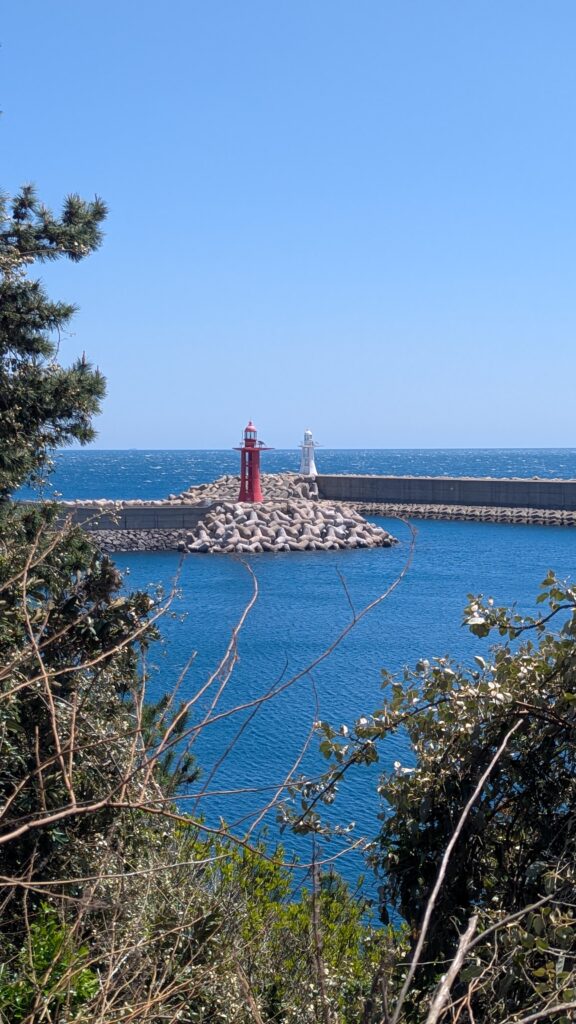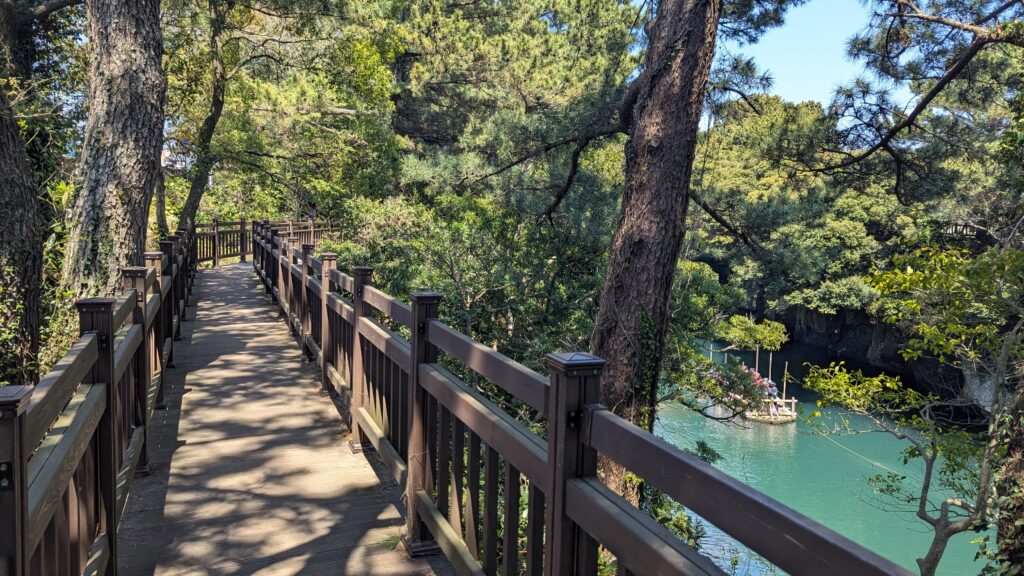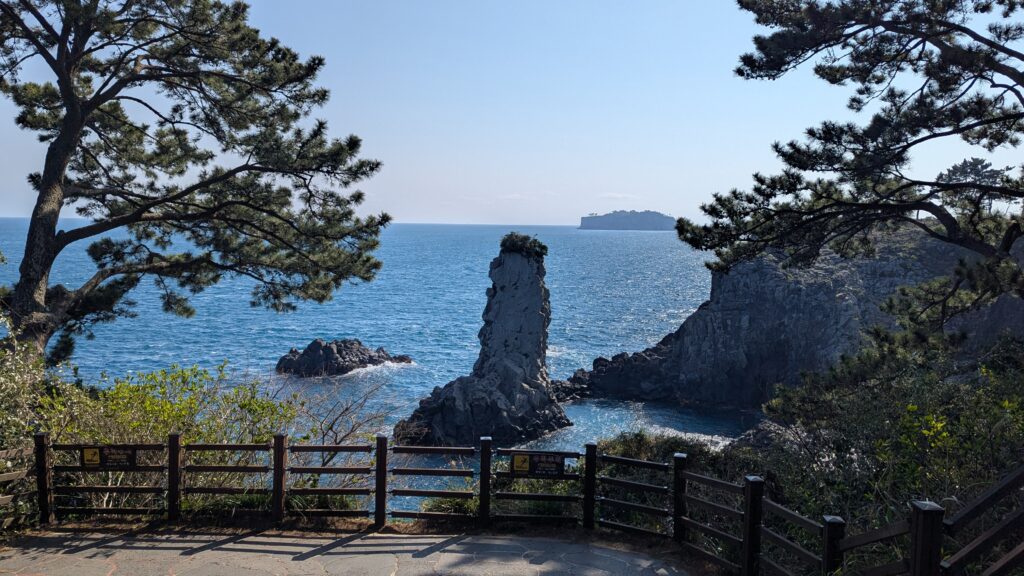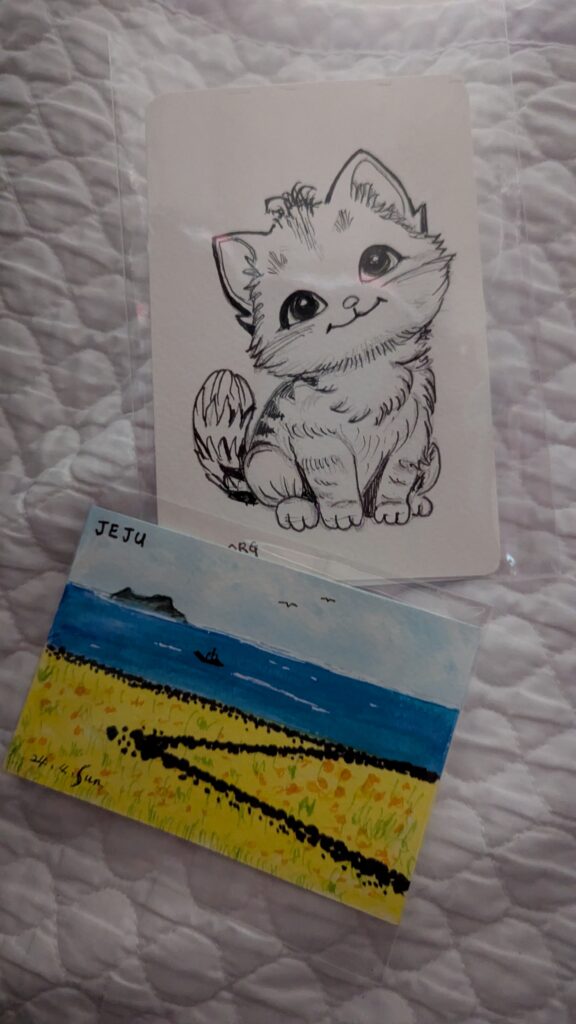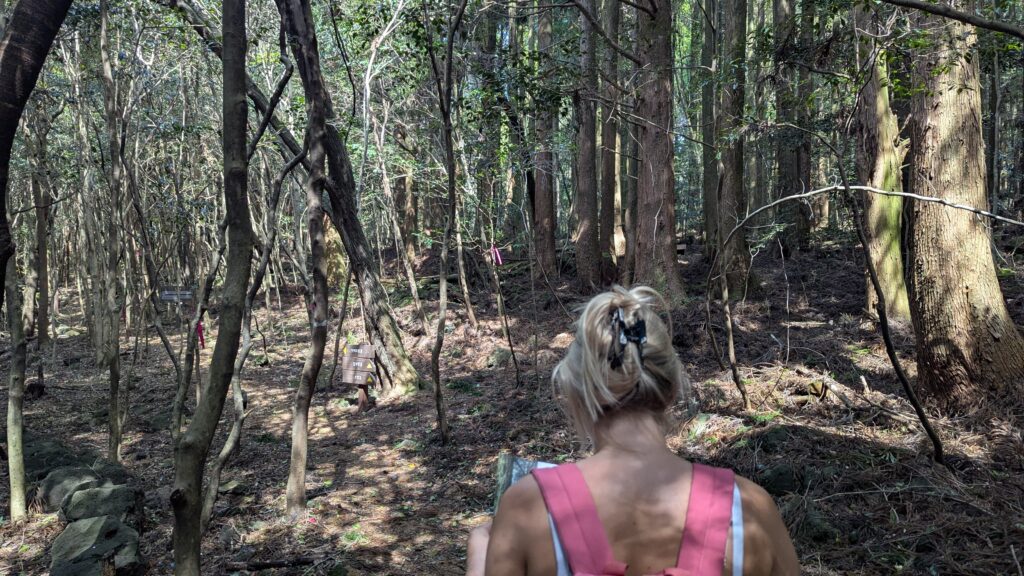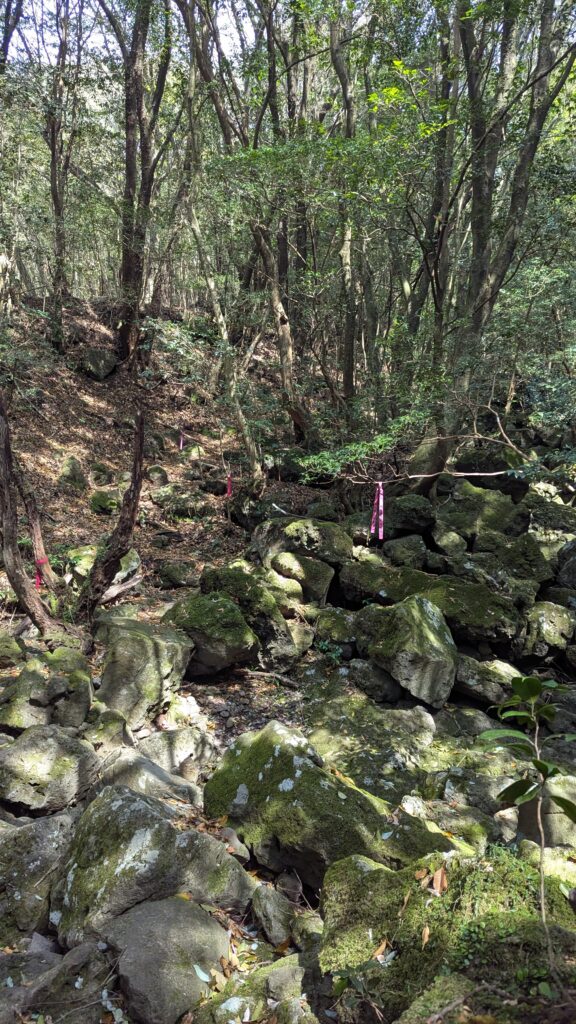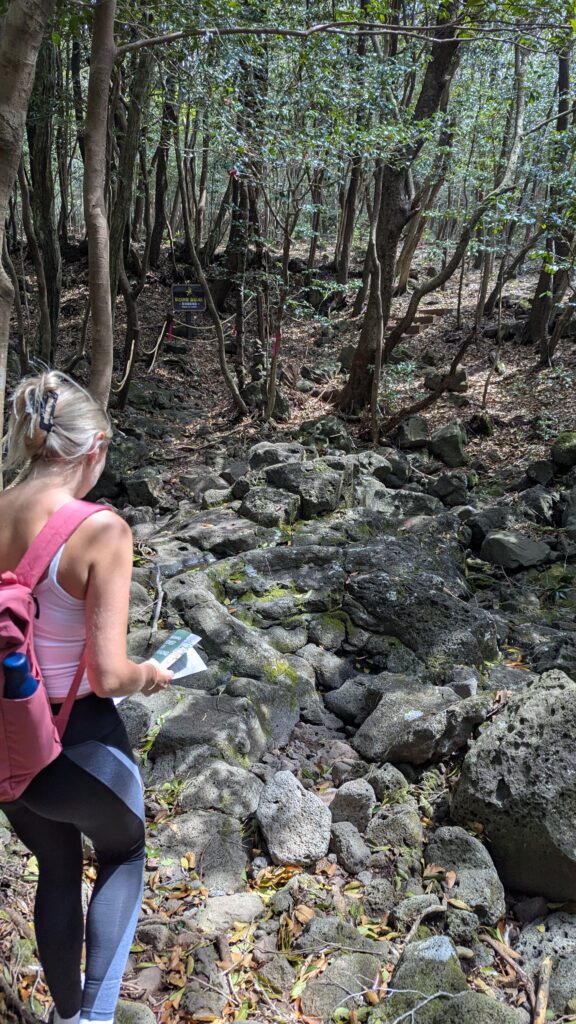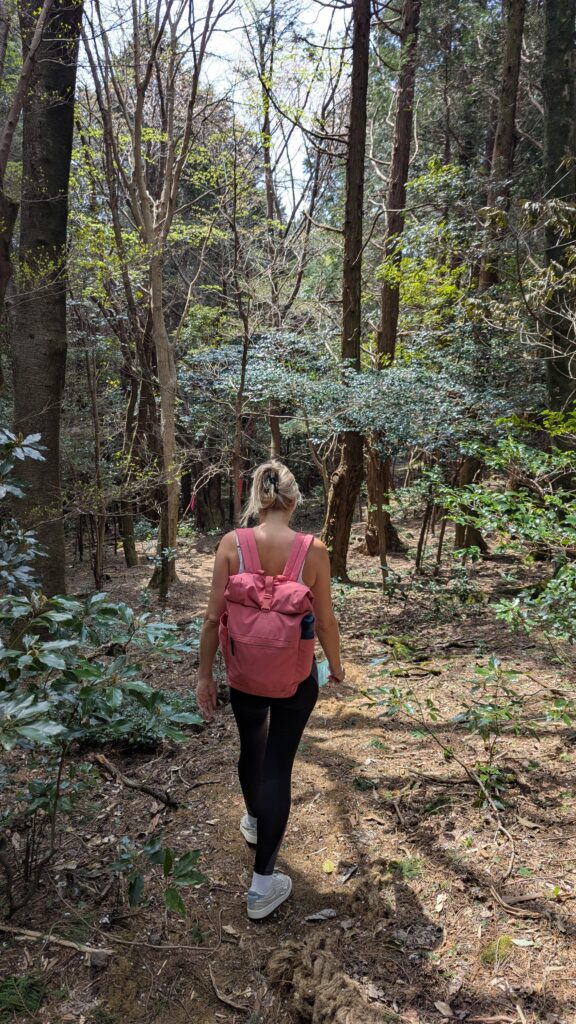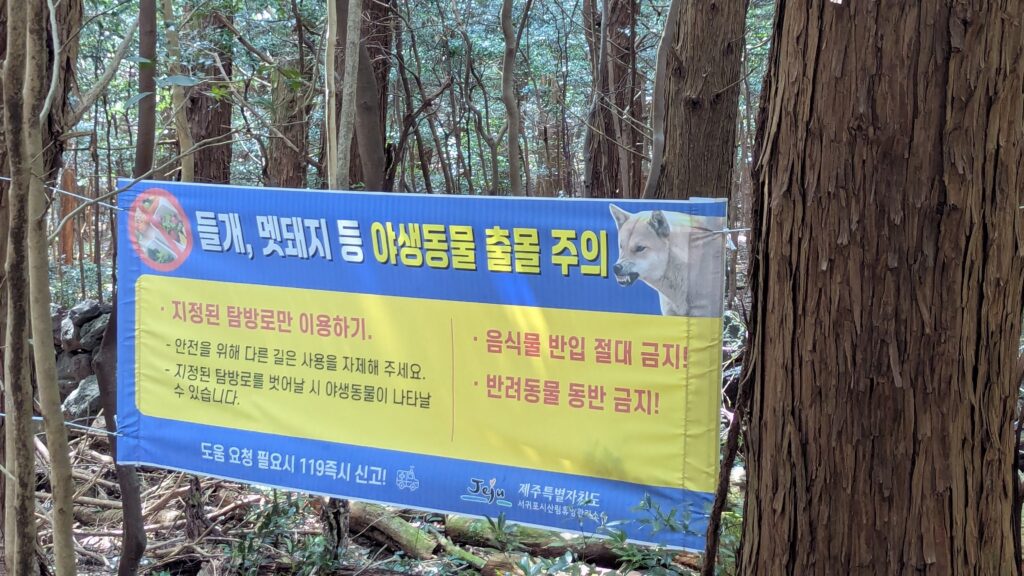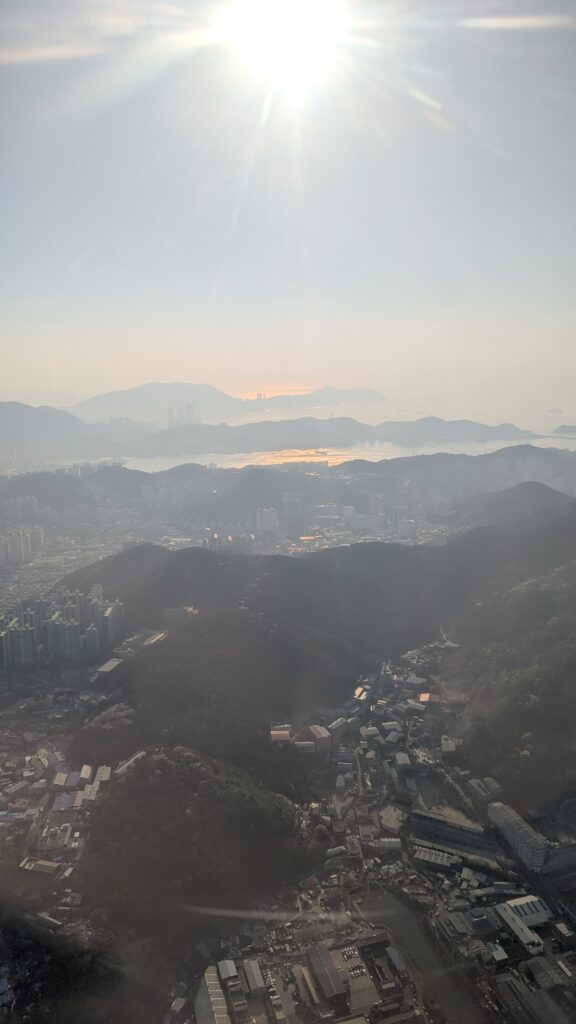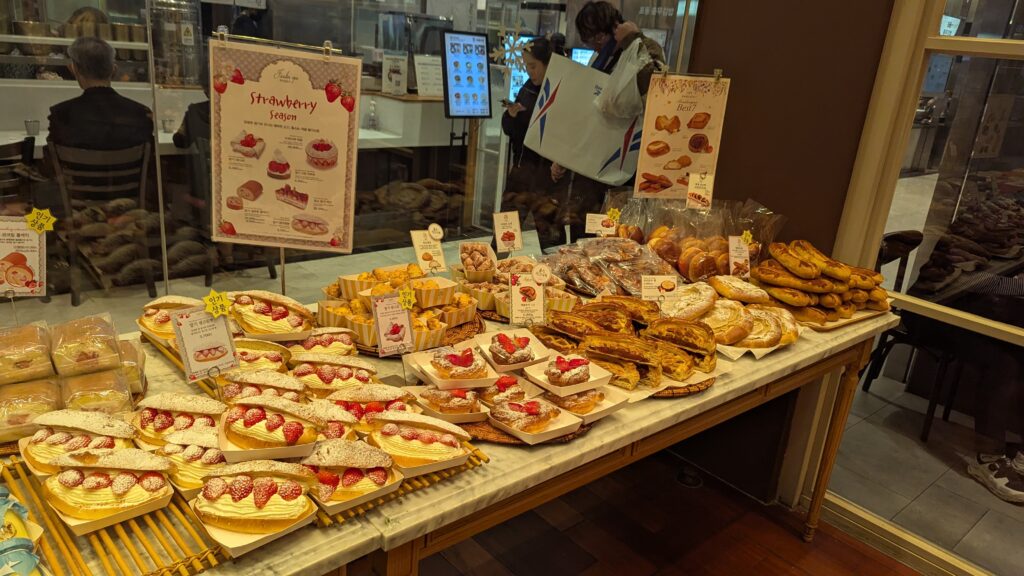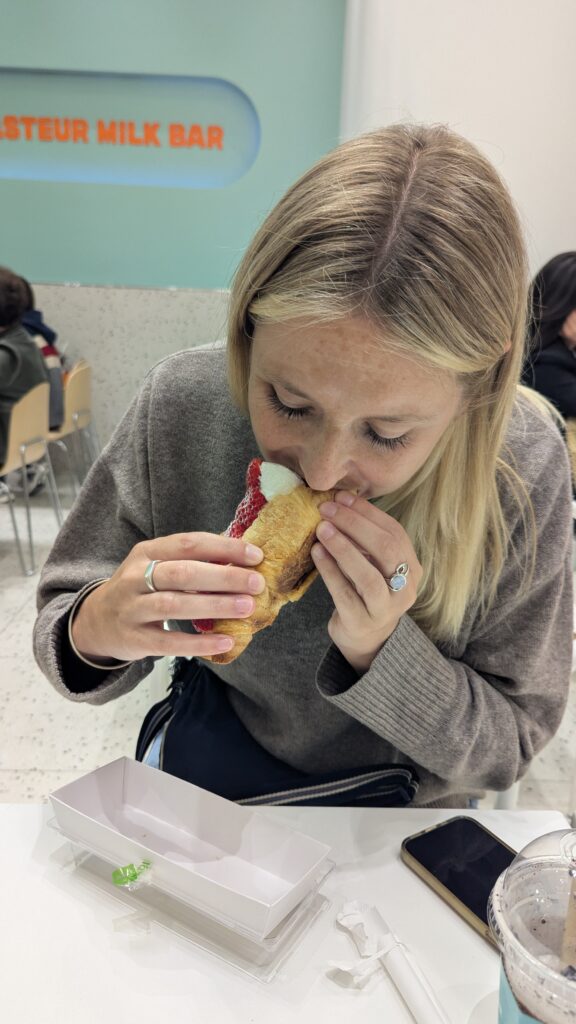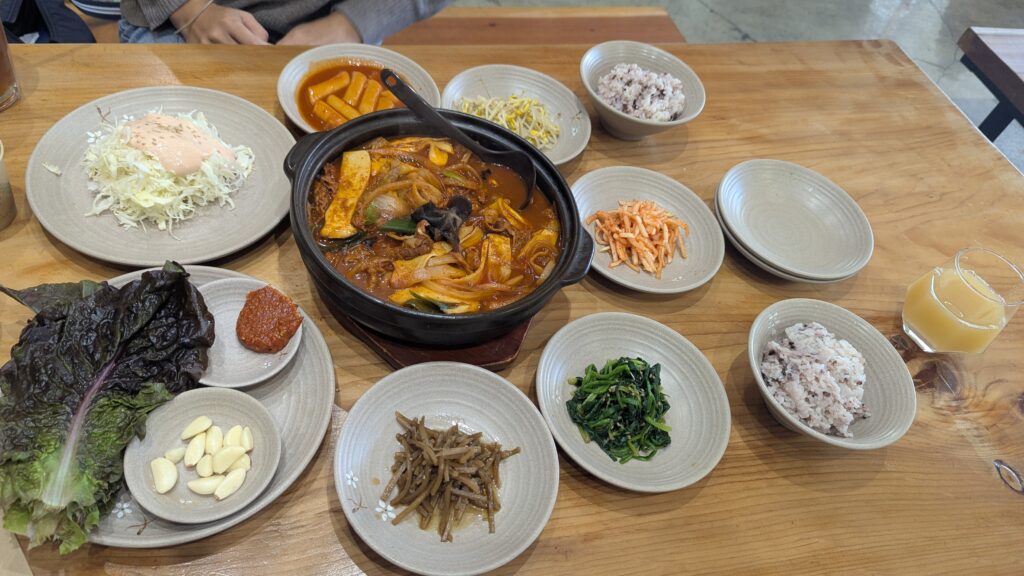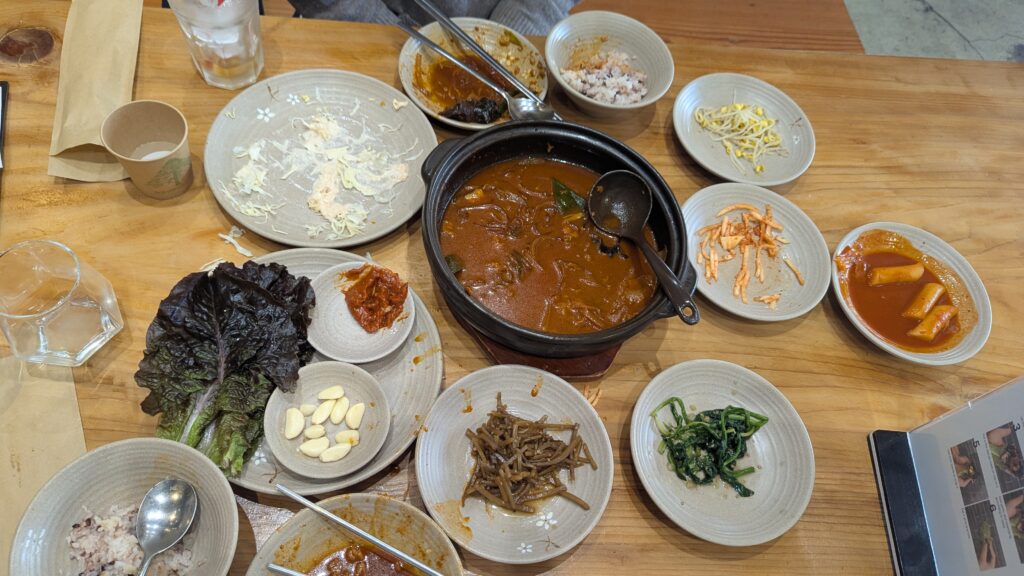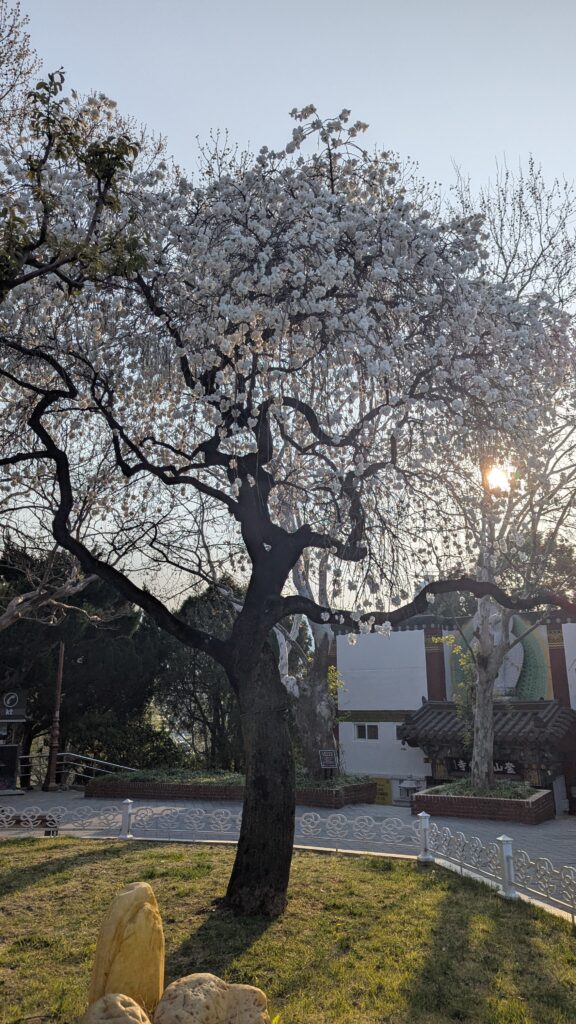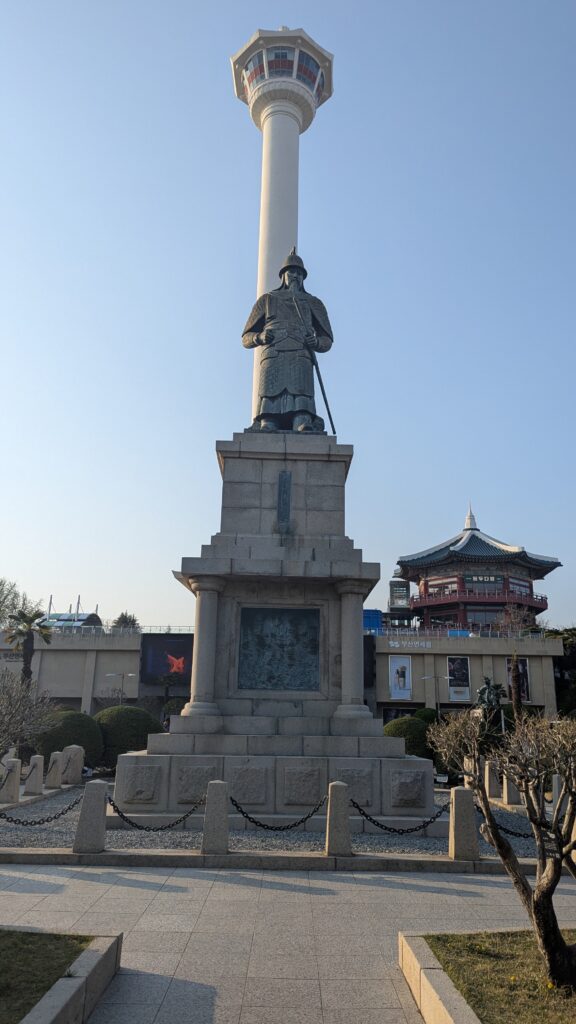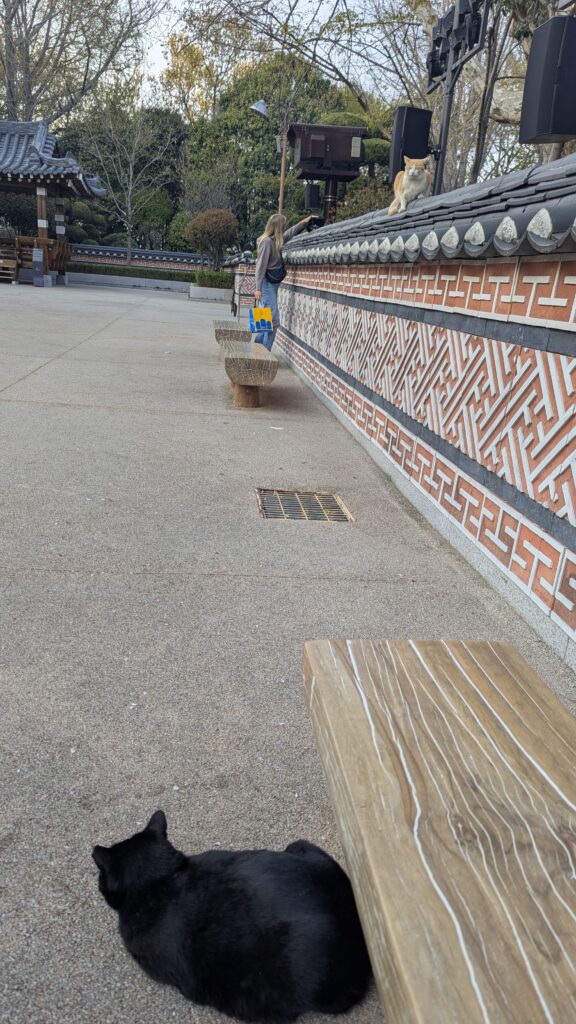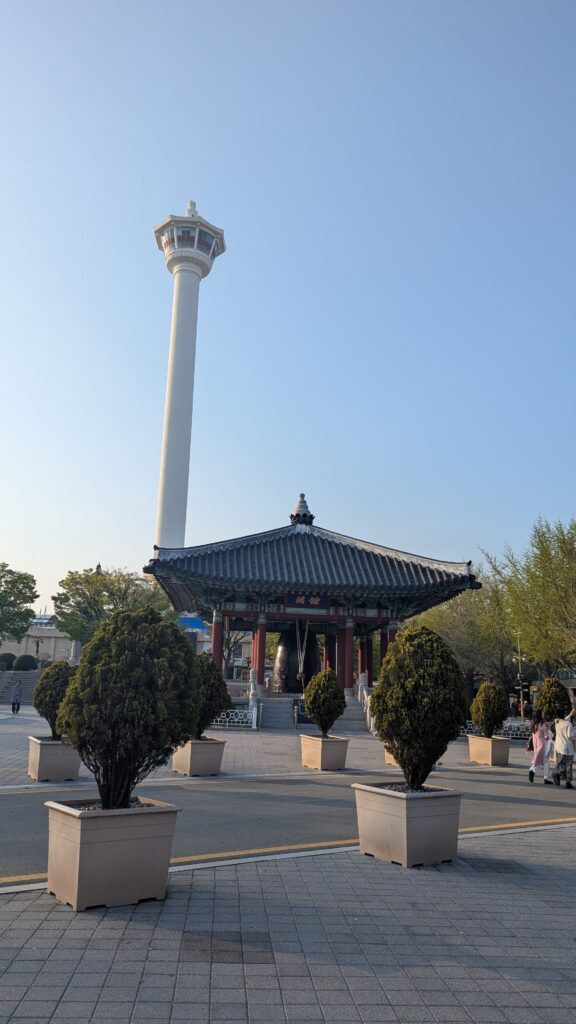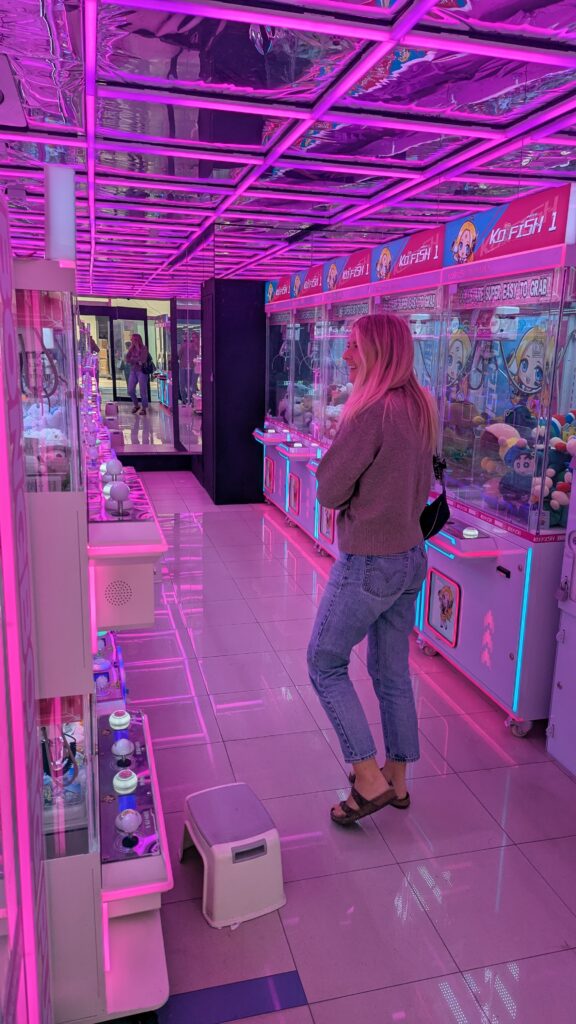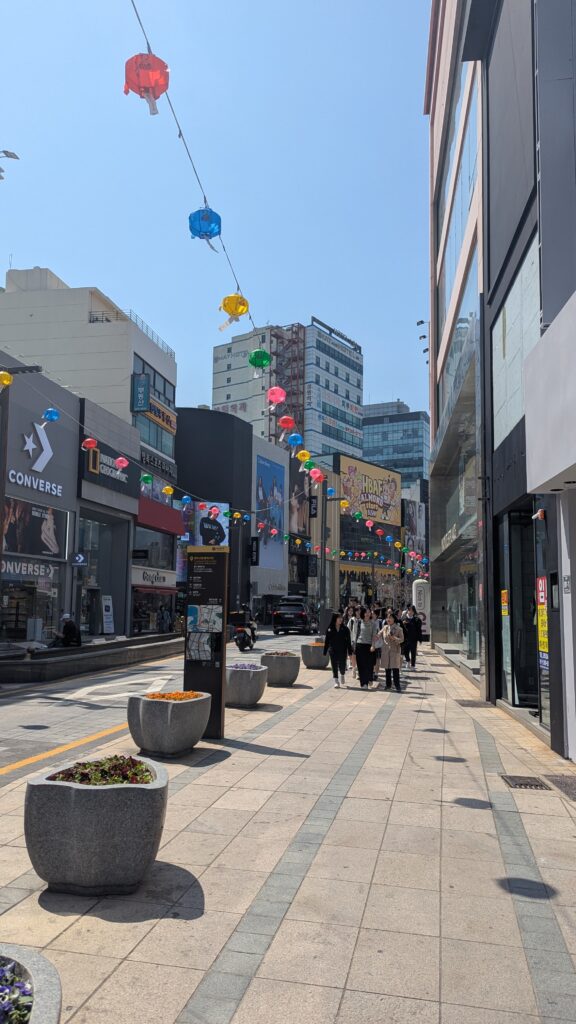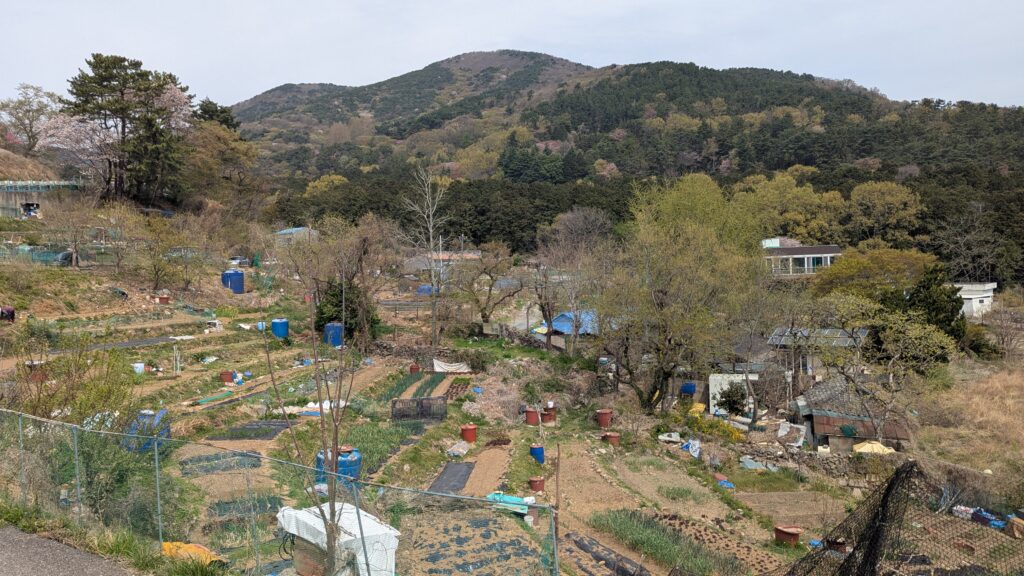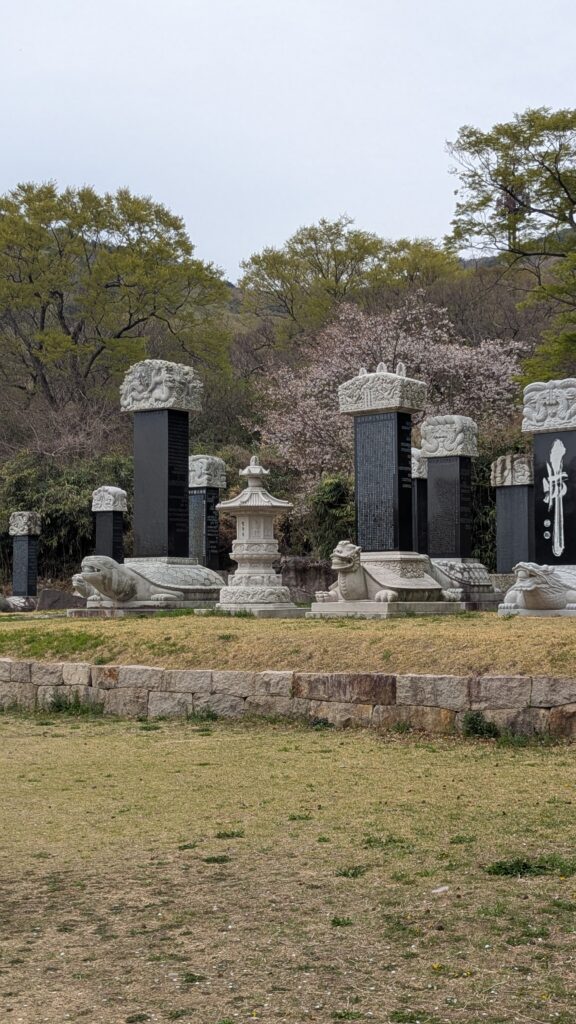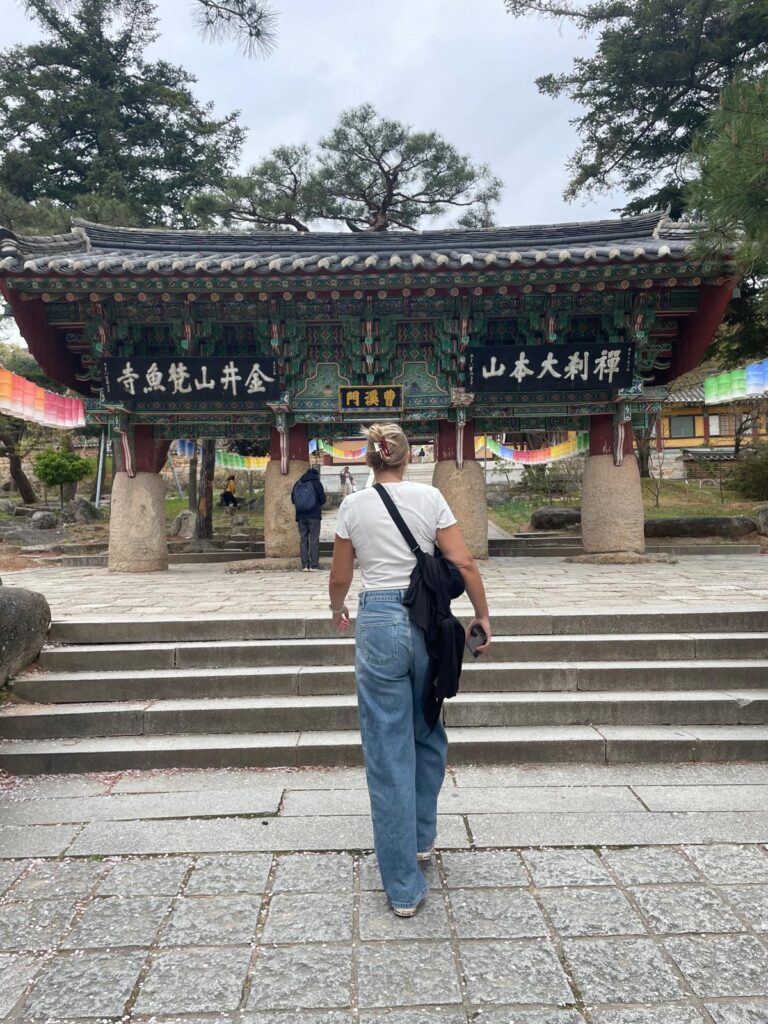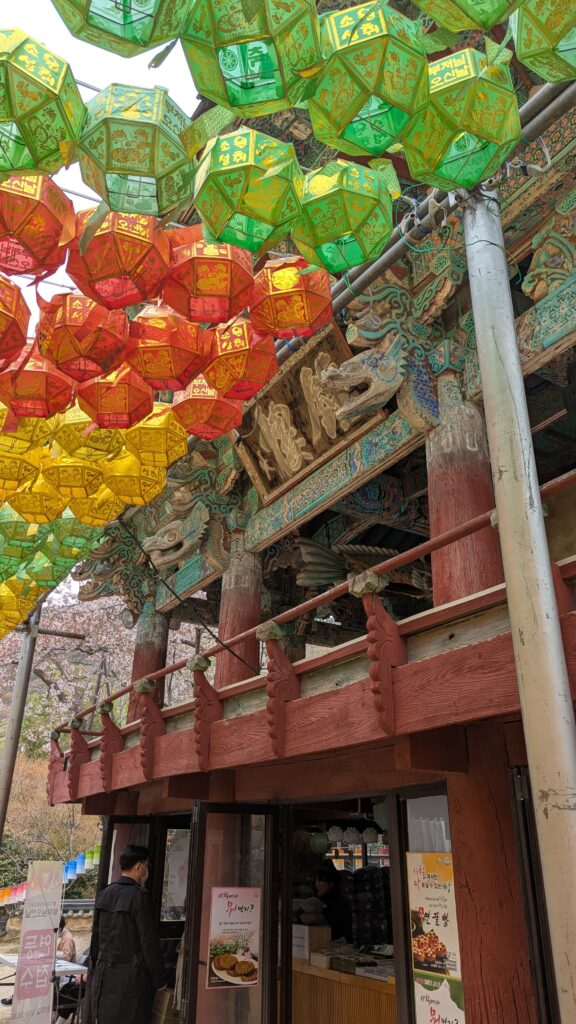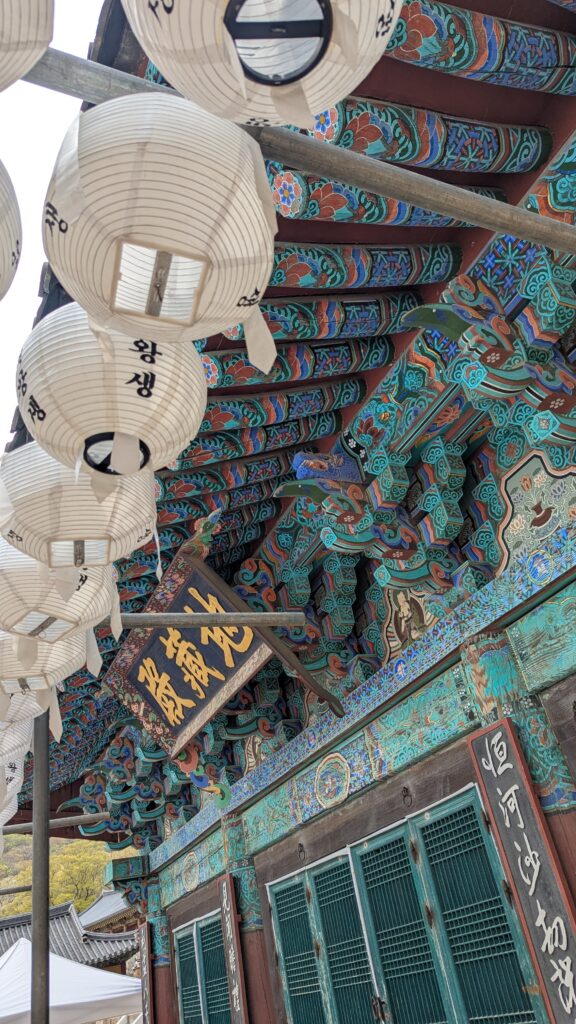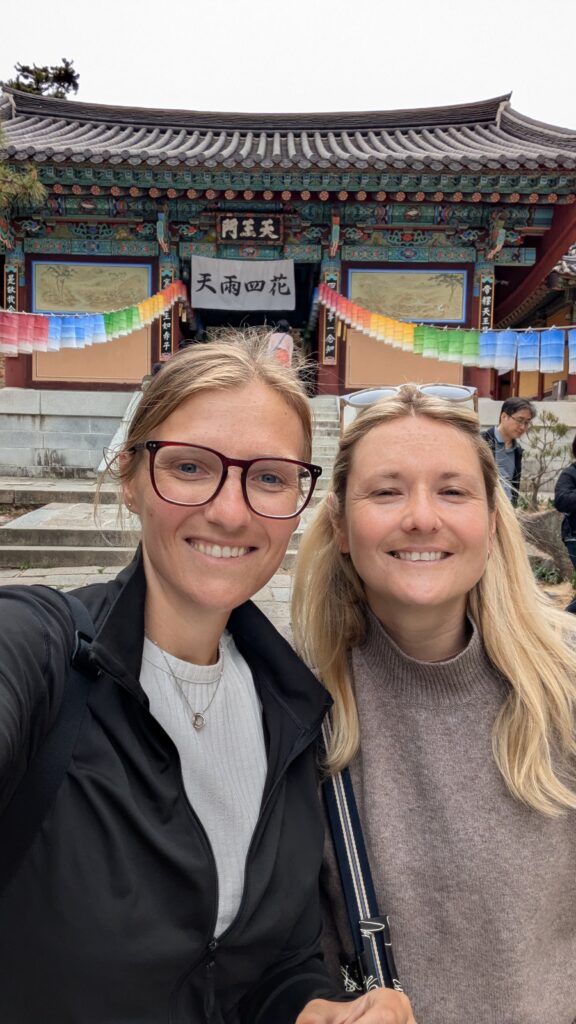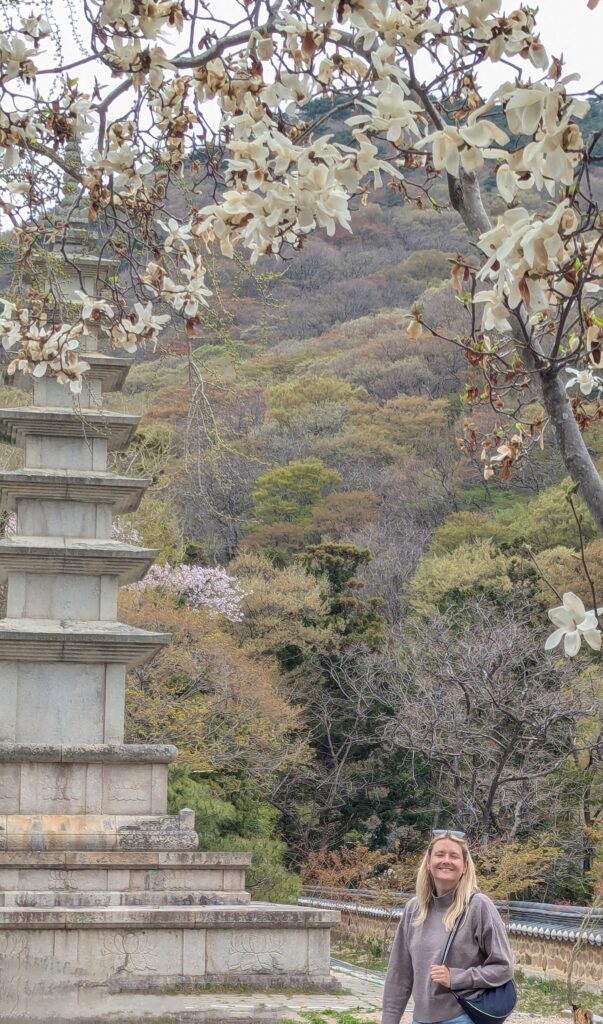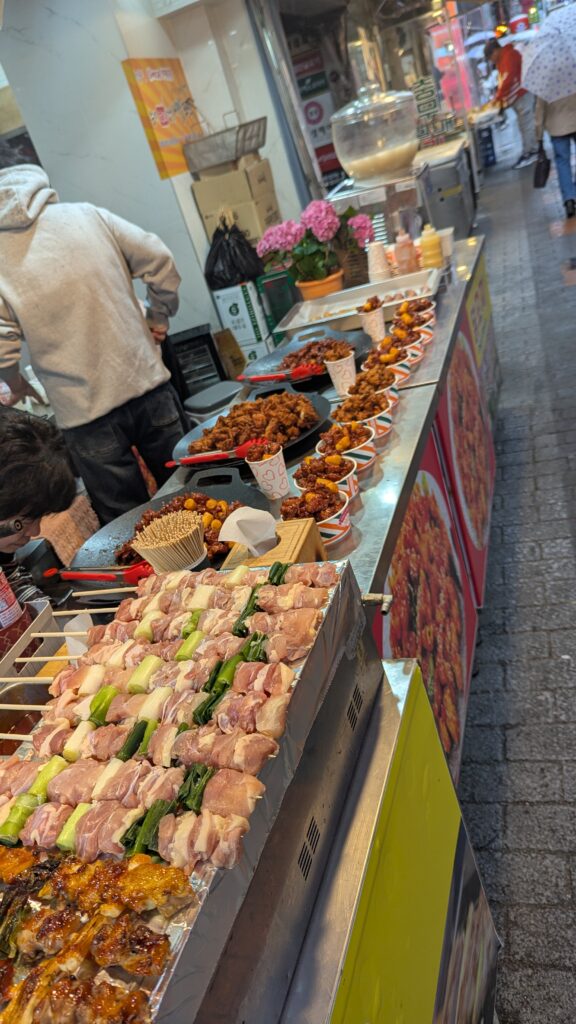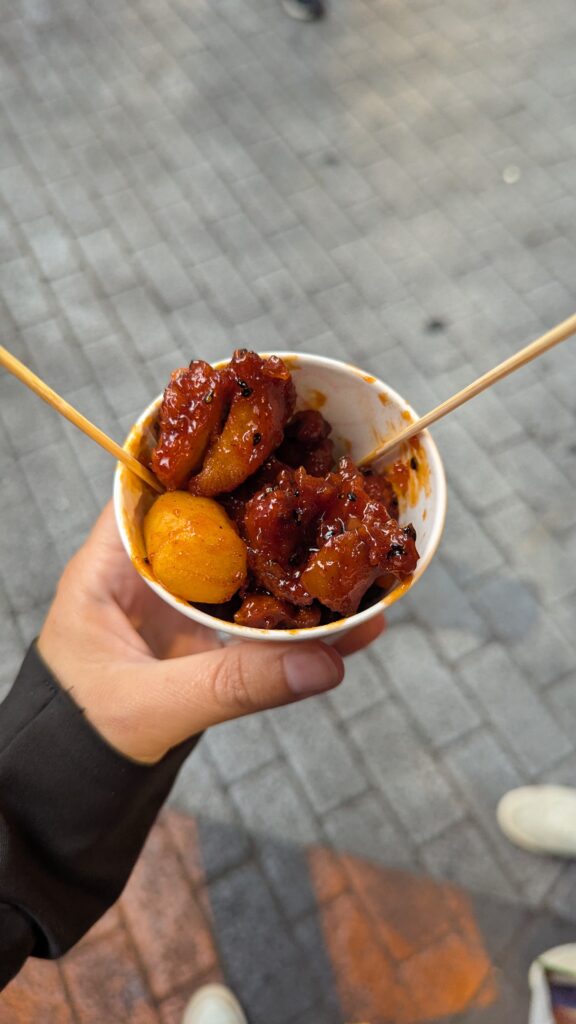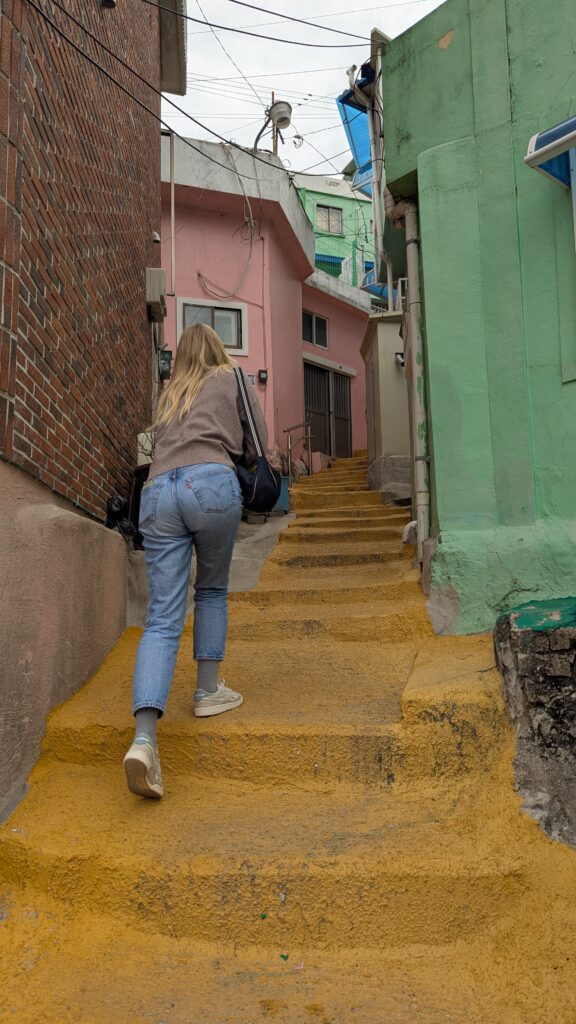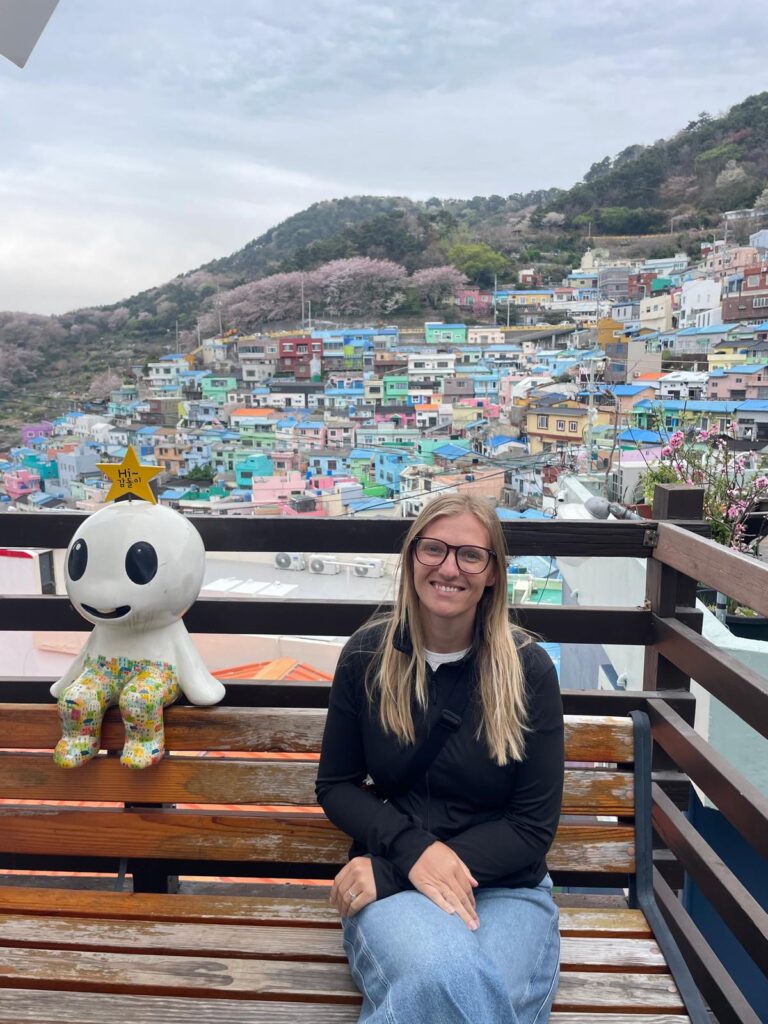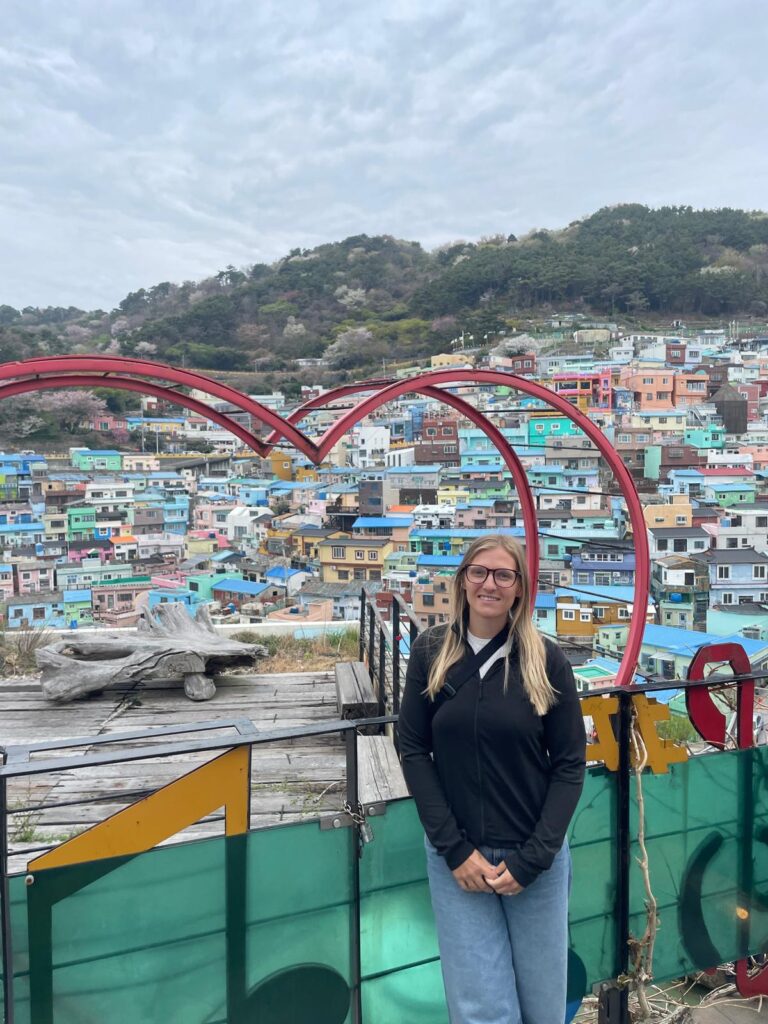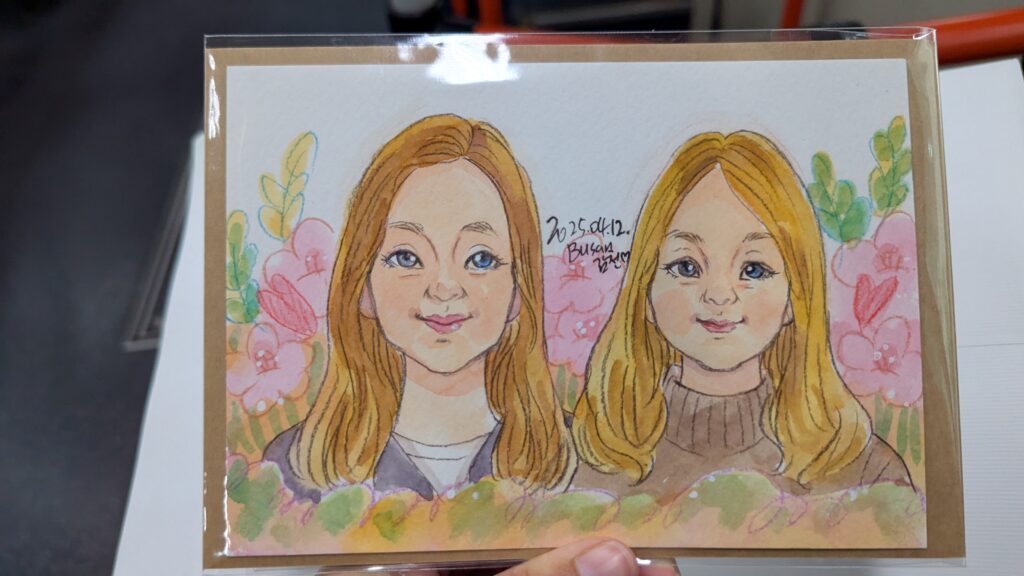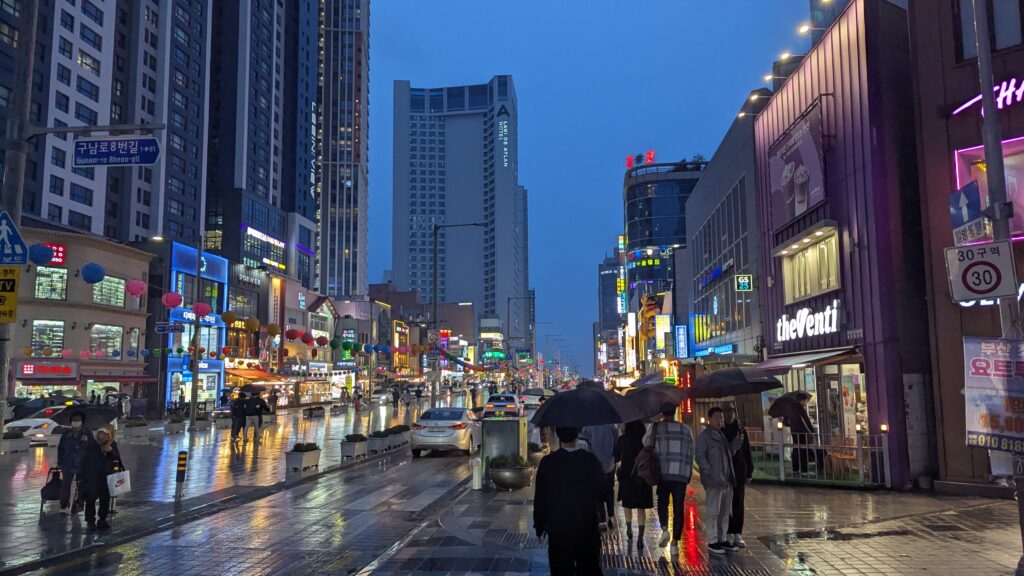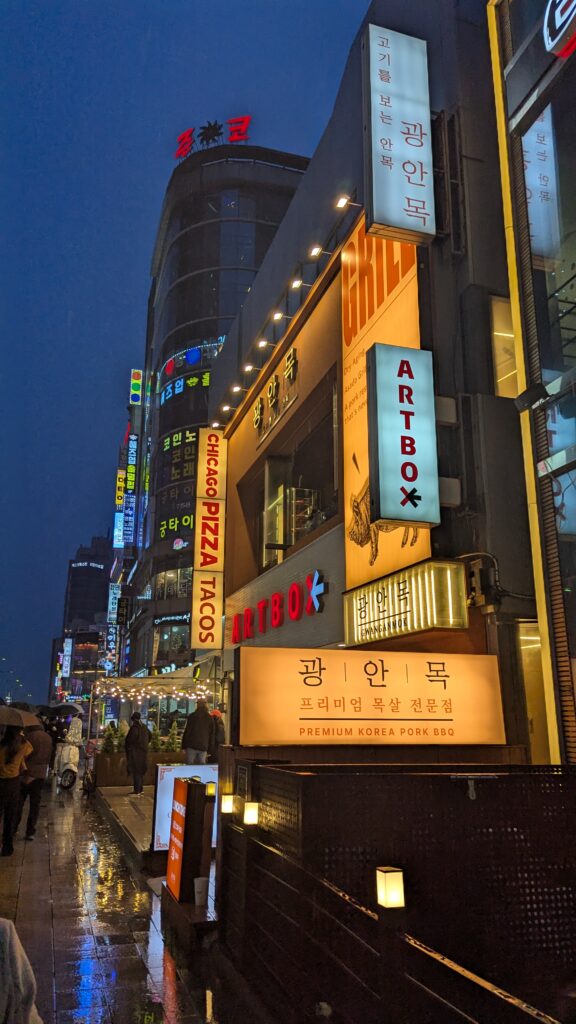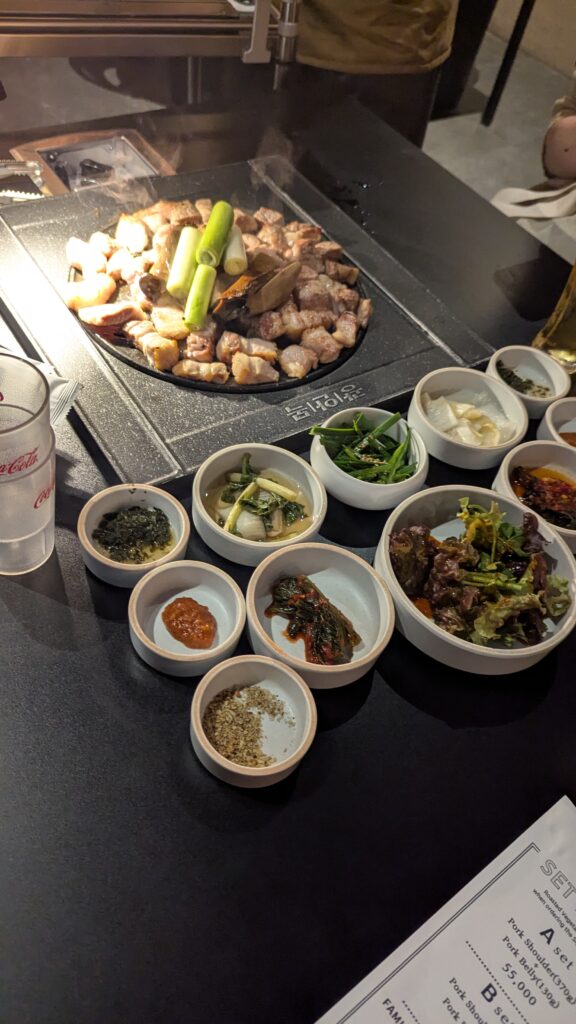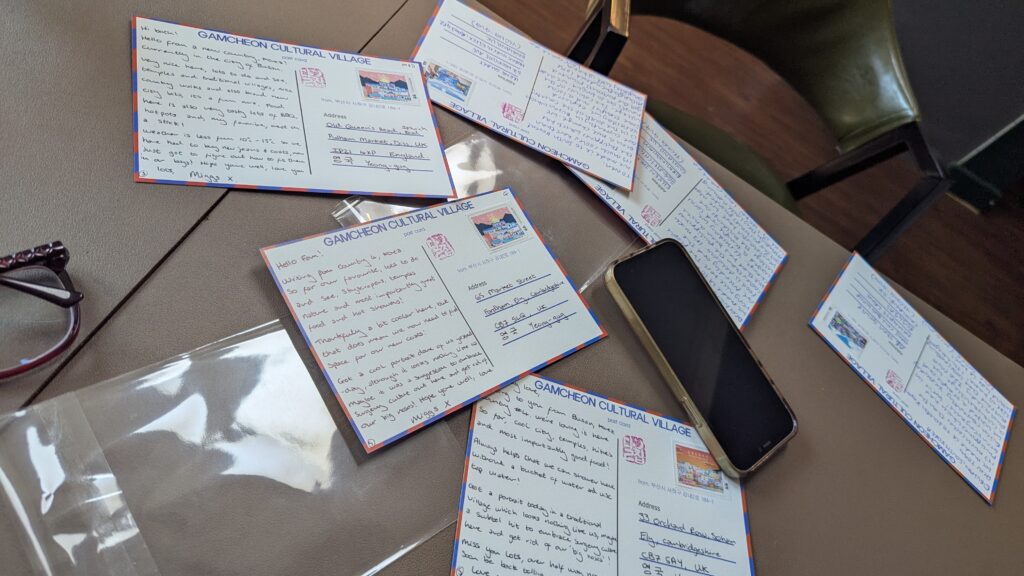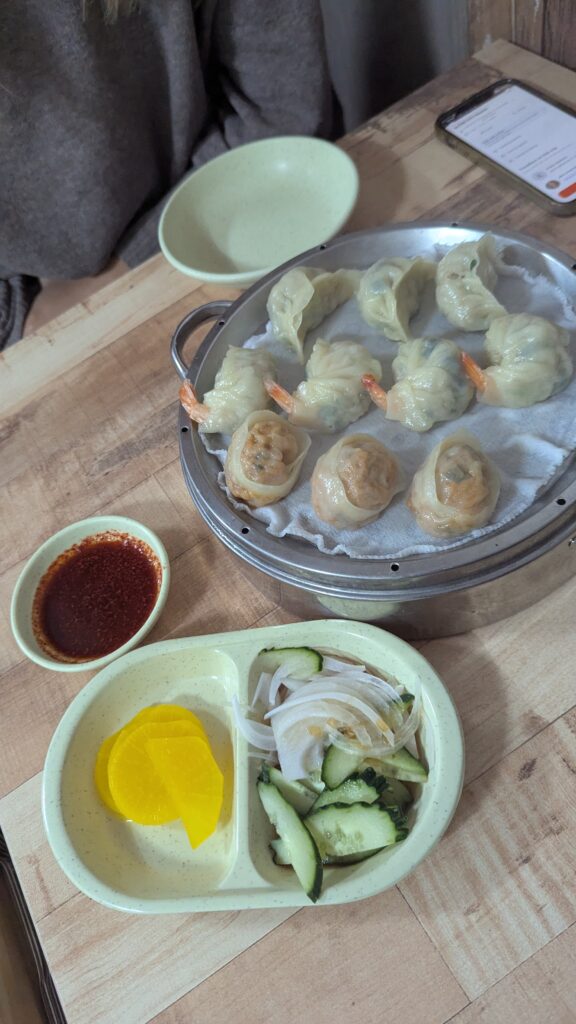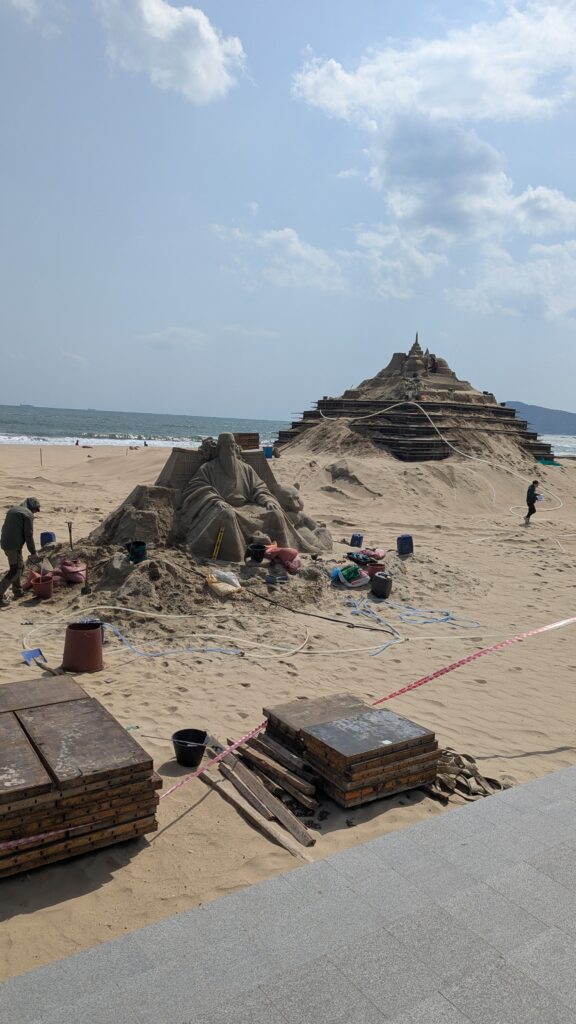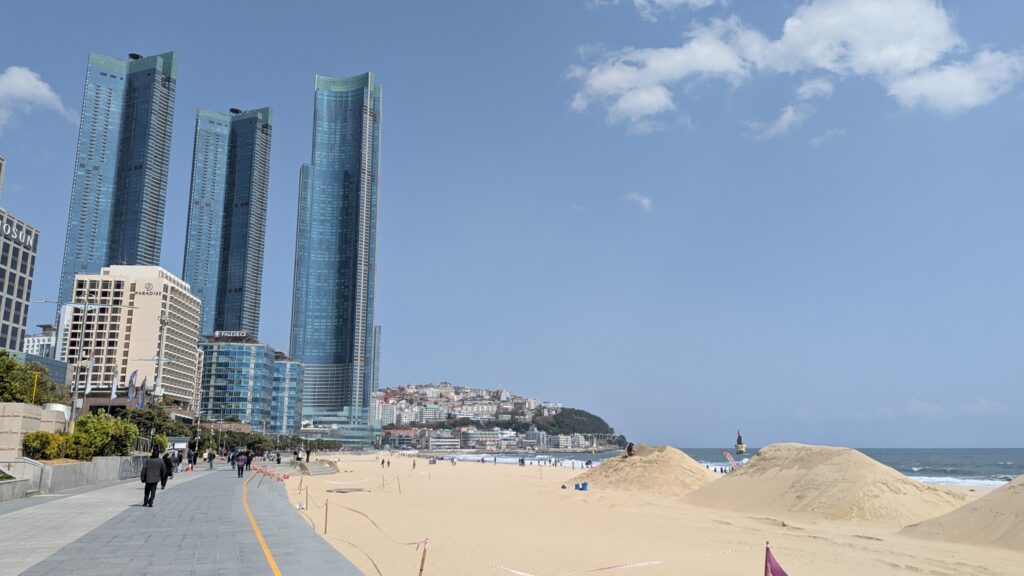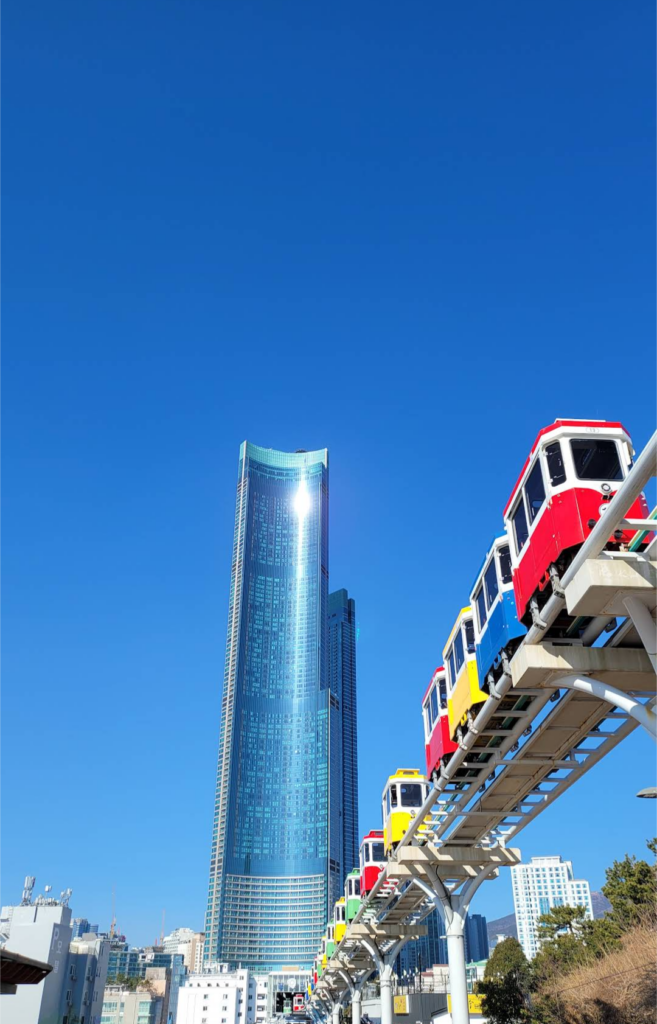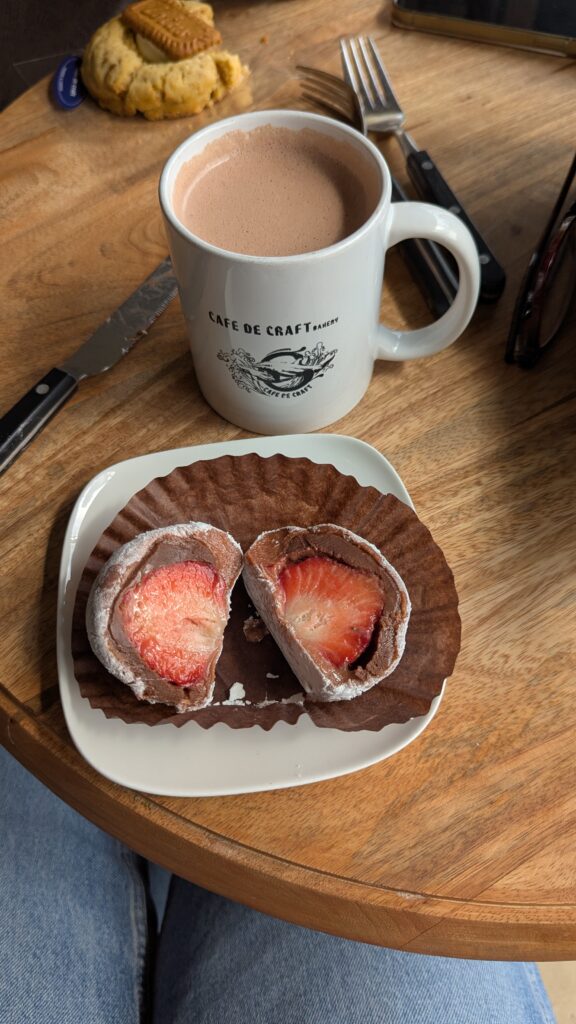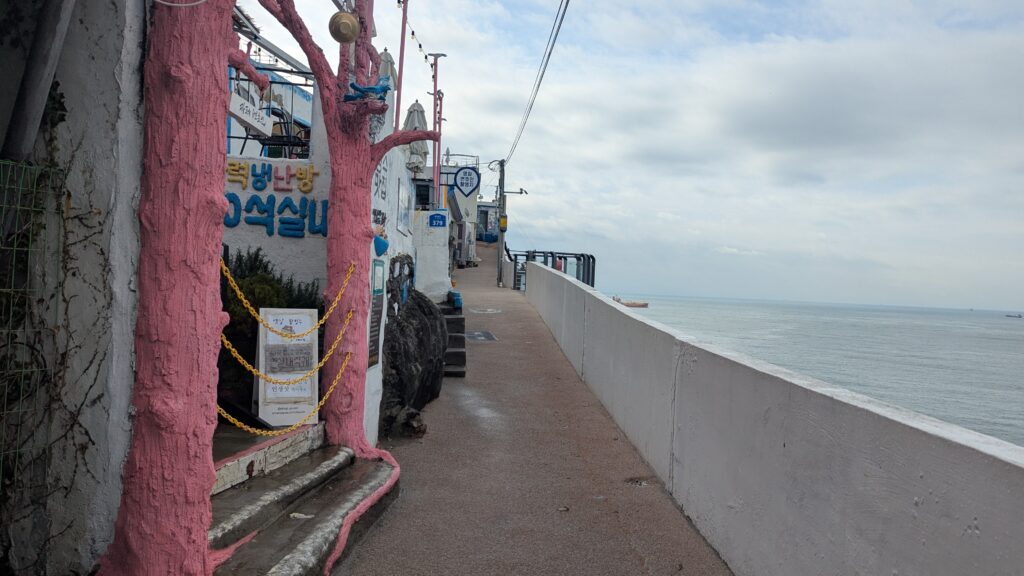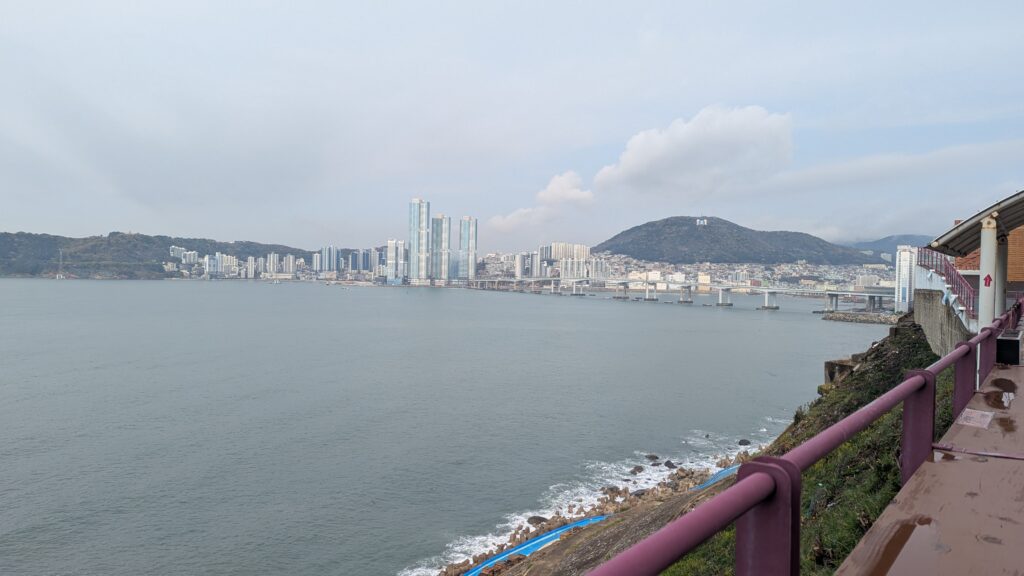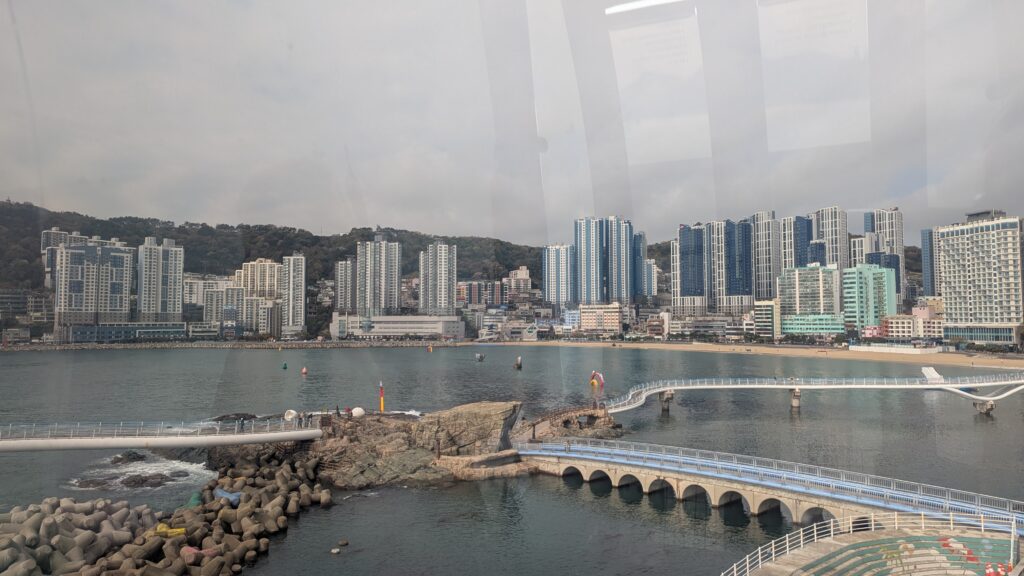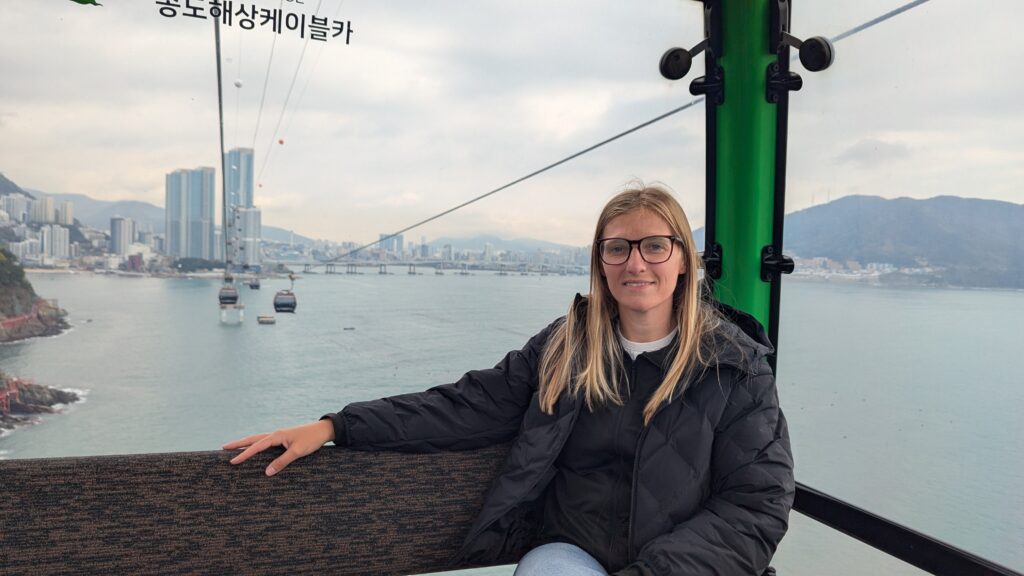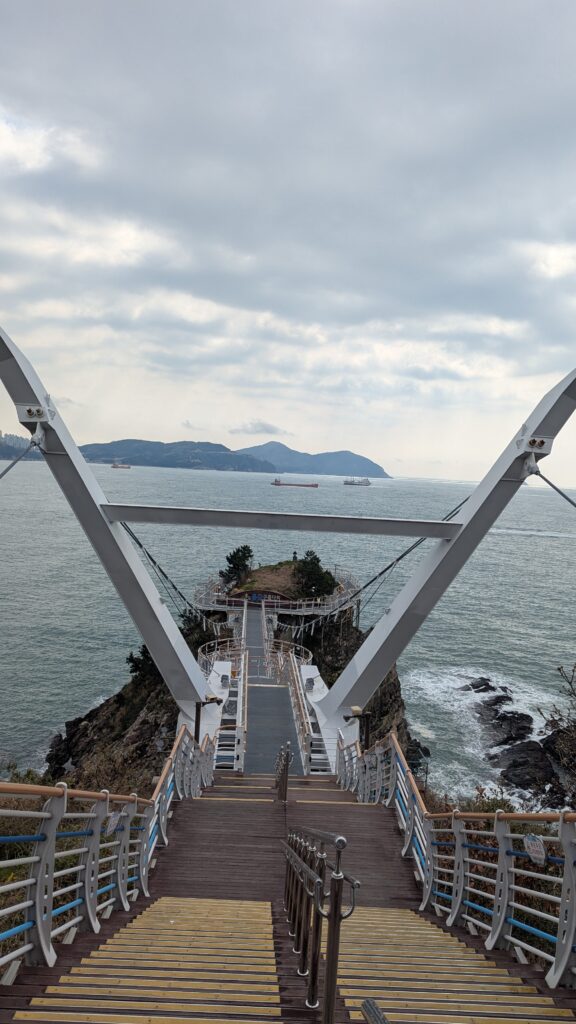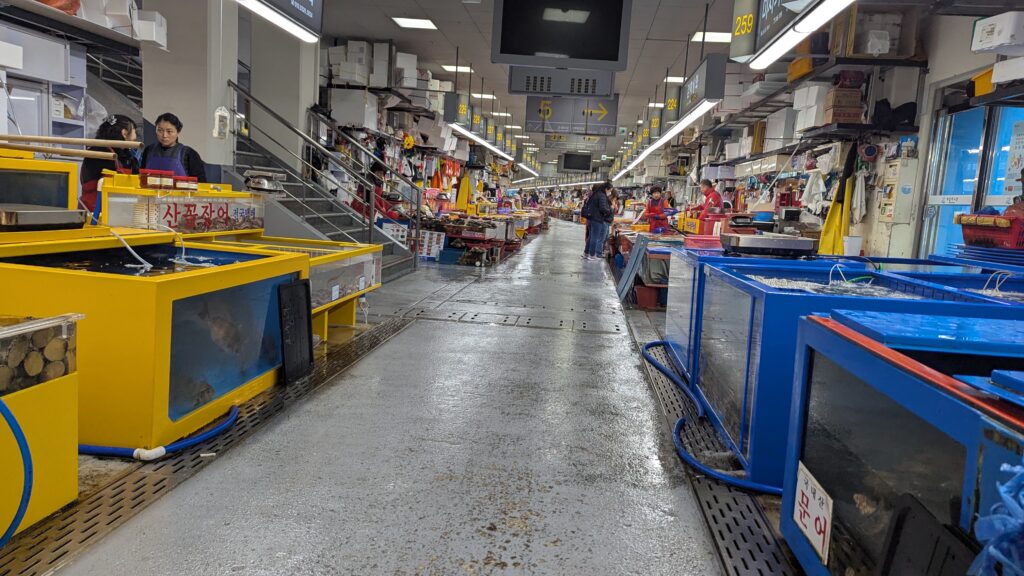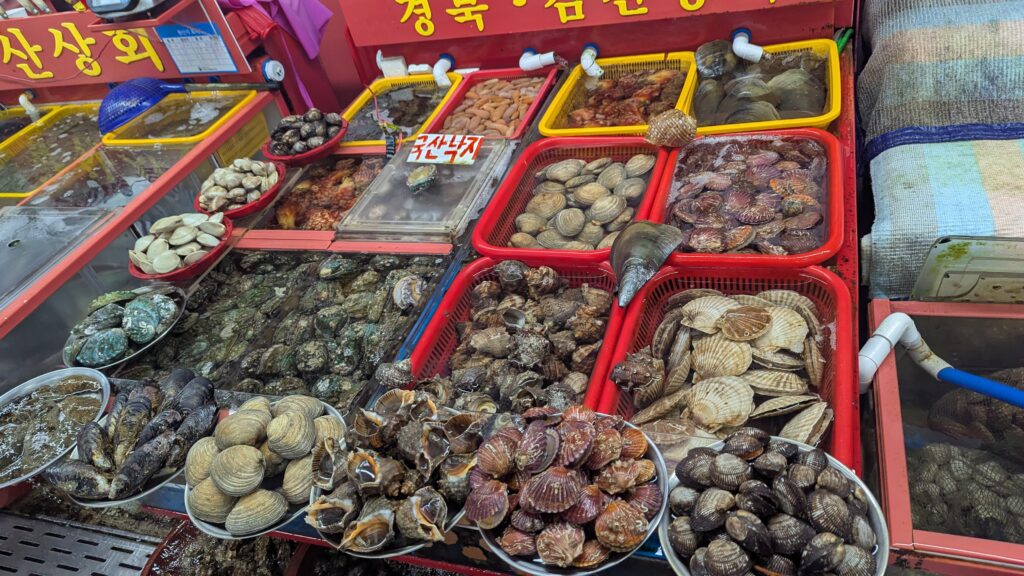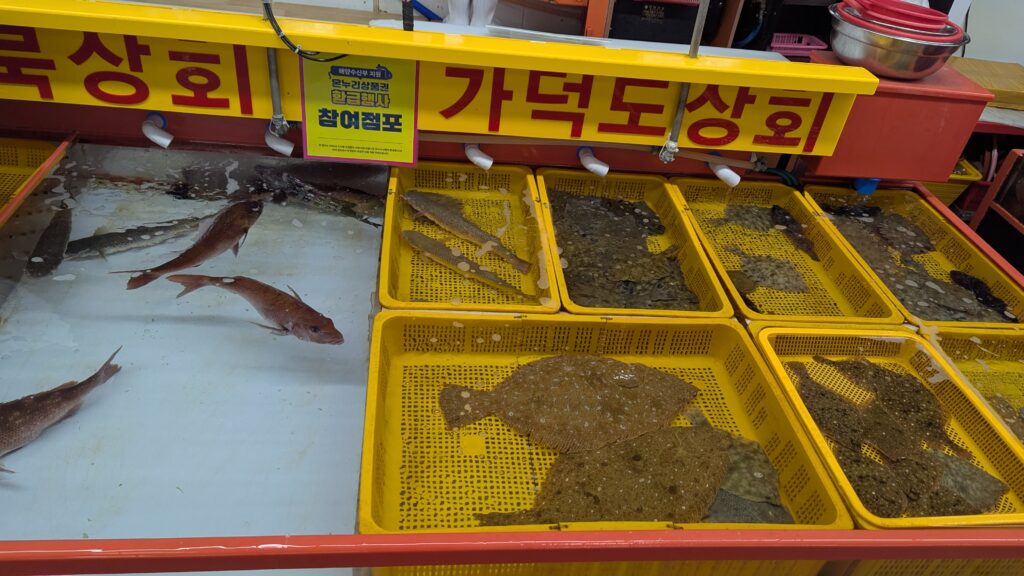Getting around South Korea has been super easy so far—everything in tourist areas is really well signposted, and most signs include English translations. One thing that surprised us is that Google Maps doesn’t really work here, as the Korean government doesn’t provide mapping data to foreign companies. Instead, we’ve been using a local app called Naver, which has been brilliant. It’s mostly in Korean but has decent English translations and works really well for directions and transport.
That said, our journey to Gyeongju was a little more adventurous than usual. We needed to take a series of intercity buses, which aren’t commonly used by tourists, so everything was entirely in Korean. It felt a bit like a puzzle—matching up the characters on the buses with those on the app and just hoping for the best! At one point, we were walking along the edge of a motorway trying to find a bus stop, wondering how on earth we’d manage to match the right symbols in time to flag down the correct bus. But Korea, being as efficient and well thought out as ever, came through—there was a small kiosk by the roadside with an attendant and a self-service machine. The attendant kindly switched it to English for us, helped us buy our tickets, and even stopped us from getting on the wrong bus by making a cross with her arms every time we got too excited and tried to board the wrong one. Very helpful!
After about six hours of buses, we finally arrived in Gyeongju around 4pm and after checking in and unpacking headed straight out for dinner. We found a place serving delicious ramen—Japanese food here is surprisingly good too.
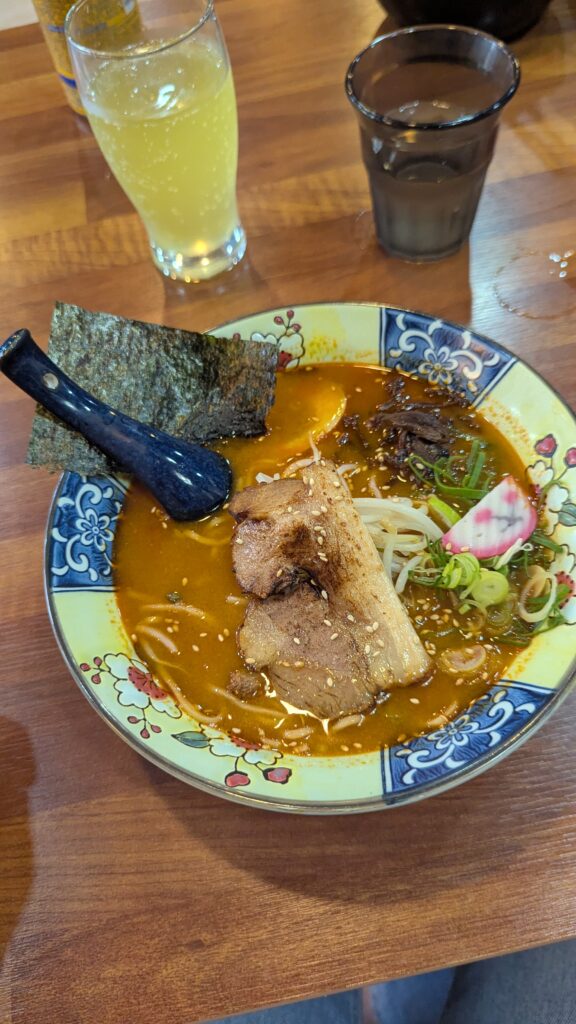
Gyeongju is a city steeped in history. It was founded in 57 BC and was once the fourth largest city in the world. It served as the capital of the ancient Silla kingdom, which ruled over two-thirds of Korea from the 7th to the 9th century. History is everywhere here, so after dinner we went for an evening walk to see some of the historical sites beautifully lit up at night.
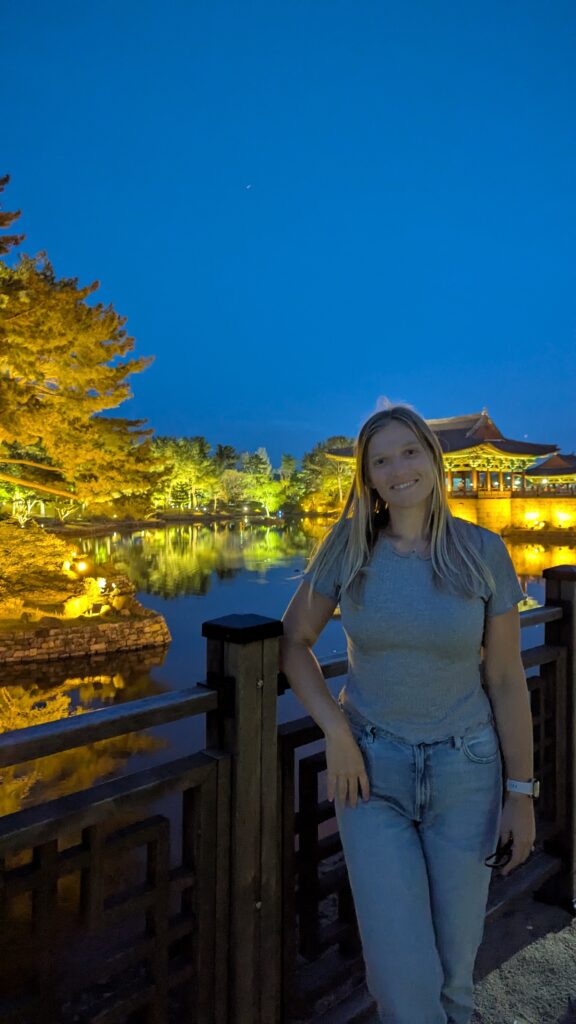
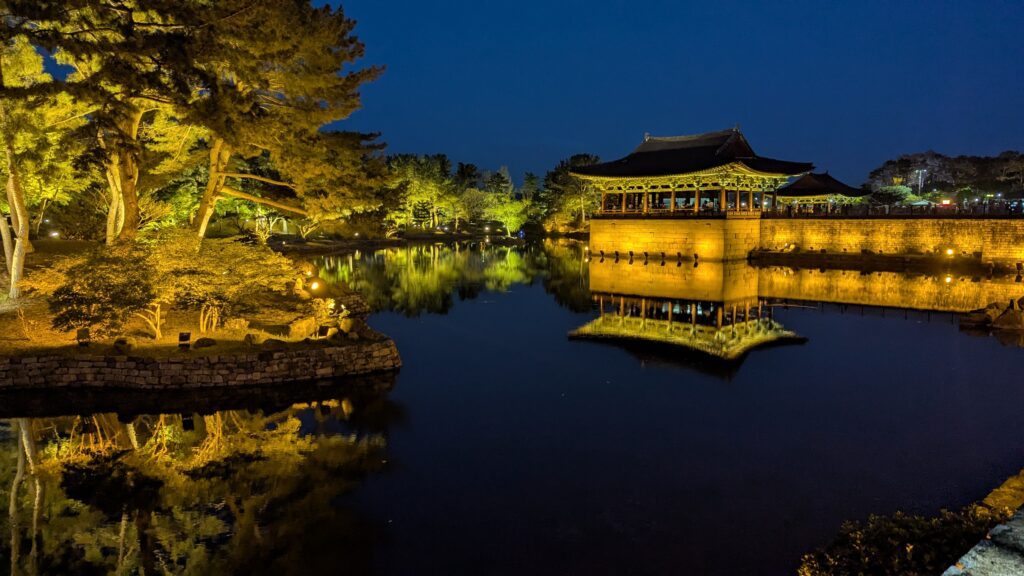
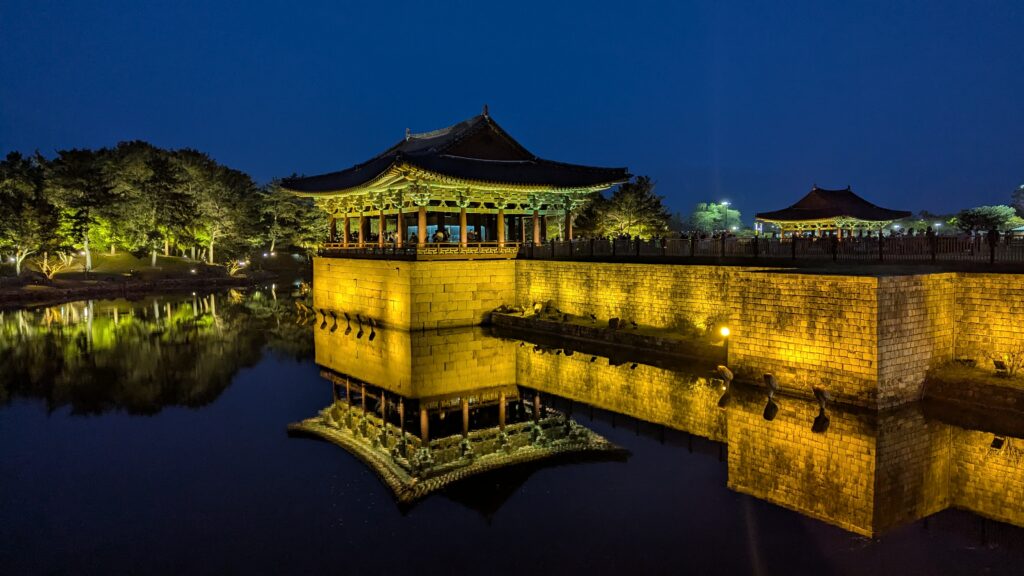
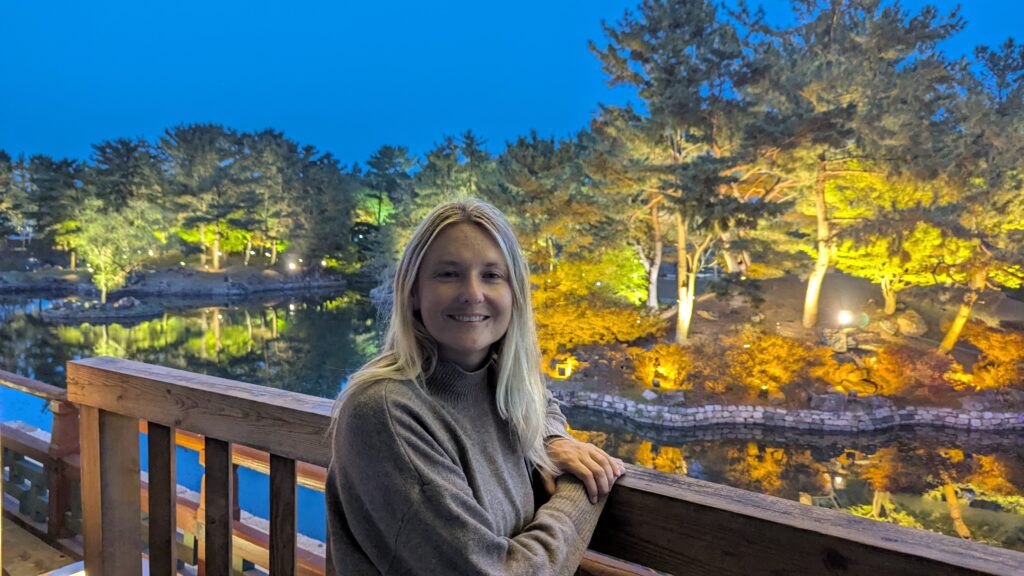
We visited Donggung Palace and Wolji Pond, a restored palace complex from the Silla period. It was absolutely stunning—reflections of the lantern-lit pavilions dancing on the water. On the walk back into town, we passed the oldest surviving observatory in Asia, which was just casually standing there along the path! Back at the hostel, we spent the evening in the bar chatting with other travellers, including two Indian guys on their first trip abroad. They’d come to Korea for a Coldplay concert and decided to turn it into a holiday. They were so excited about their travels and full of questions about where else to go in Asia and Europe—it was lovely to chat and see how much they were enjoying their first adventure and how quickly they had caught the travel bug!
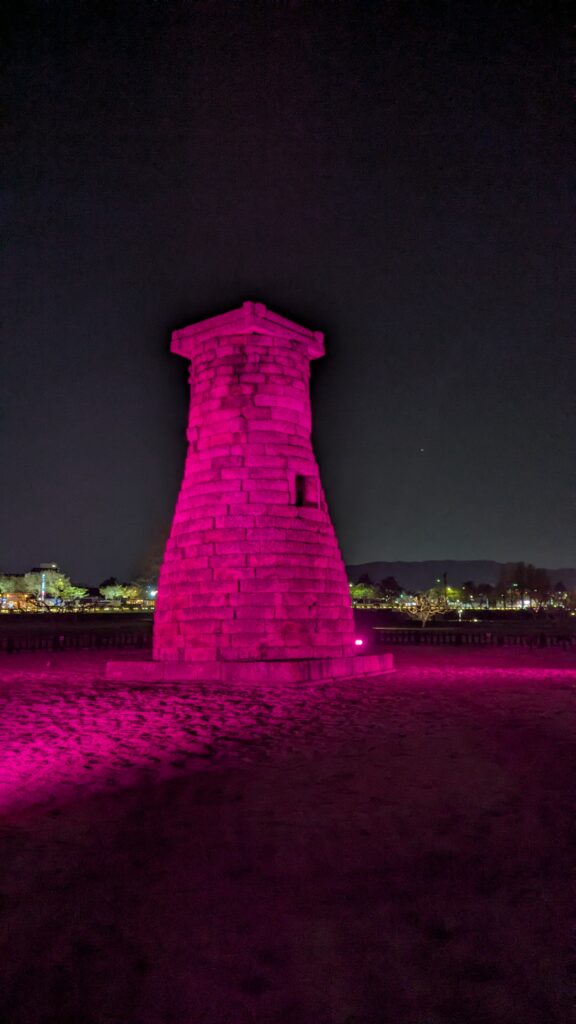
The next morning, we continued our history deep-dive at the National Museum. It was fascinating—free to enter and full of artefacts from Korea’s ancient past, especially the Silla period. We learnt about the royal tomb mounds scattered across the city and the treasures found inside them. You’re not allowed food or drinks in the museum, and while there are lockers, most people just leave their bags and belongings on benches outside. It felt strange to see at first, but it says a lot about how safe people feel here.
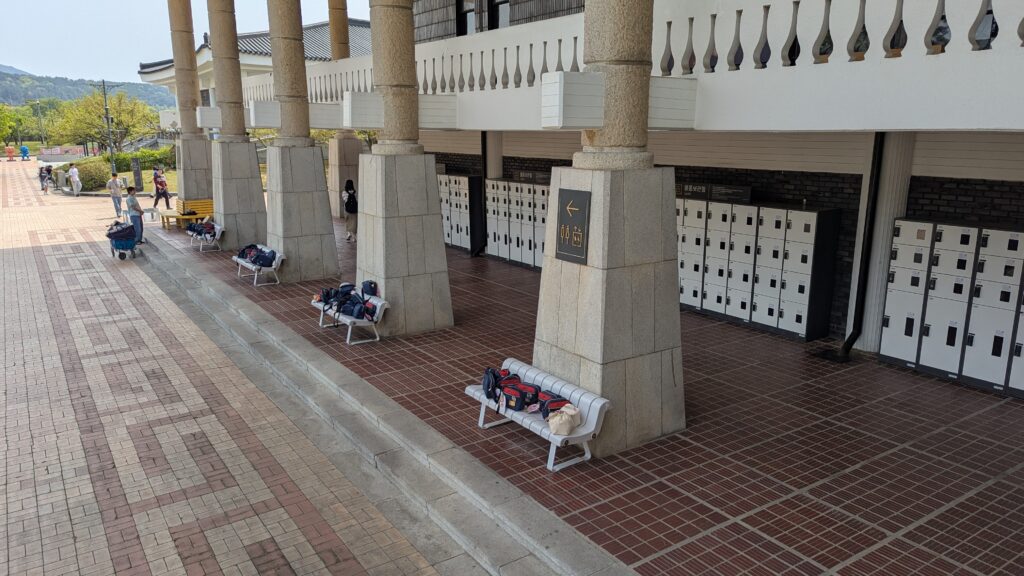
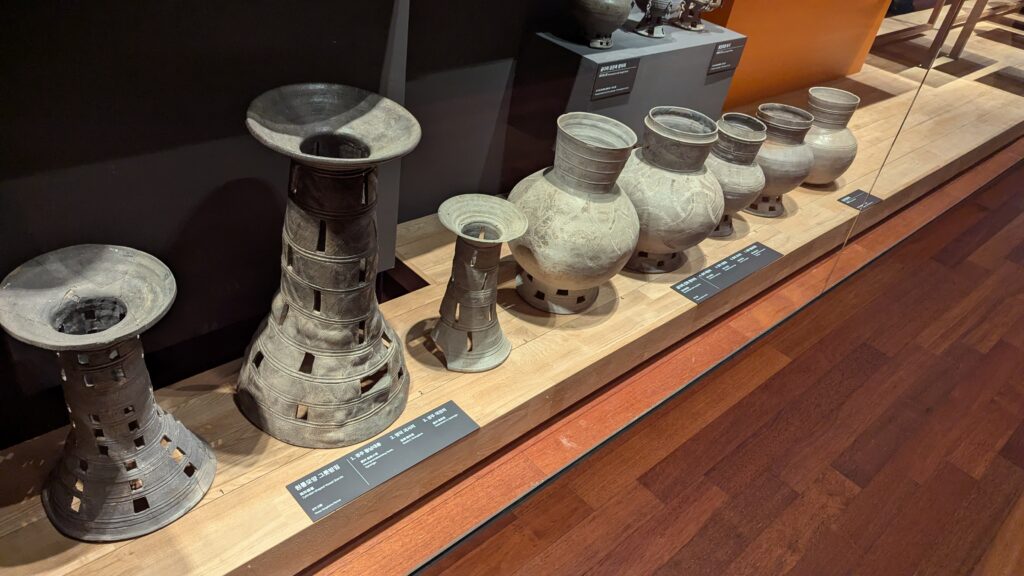
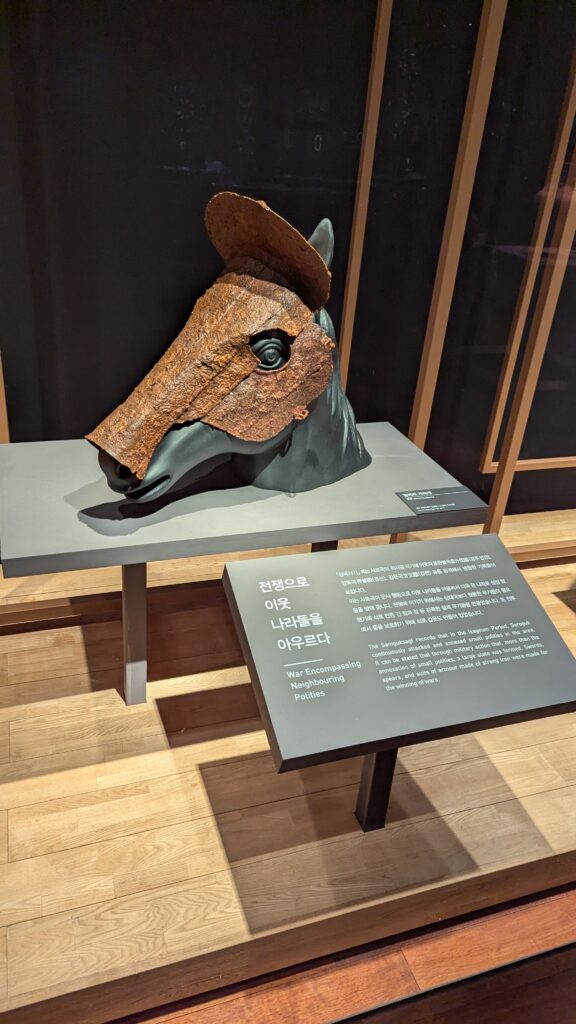
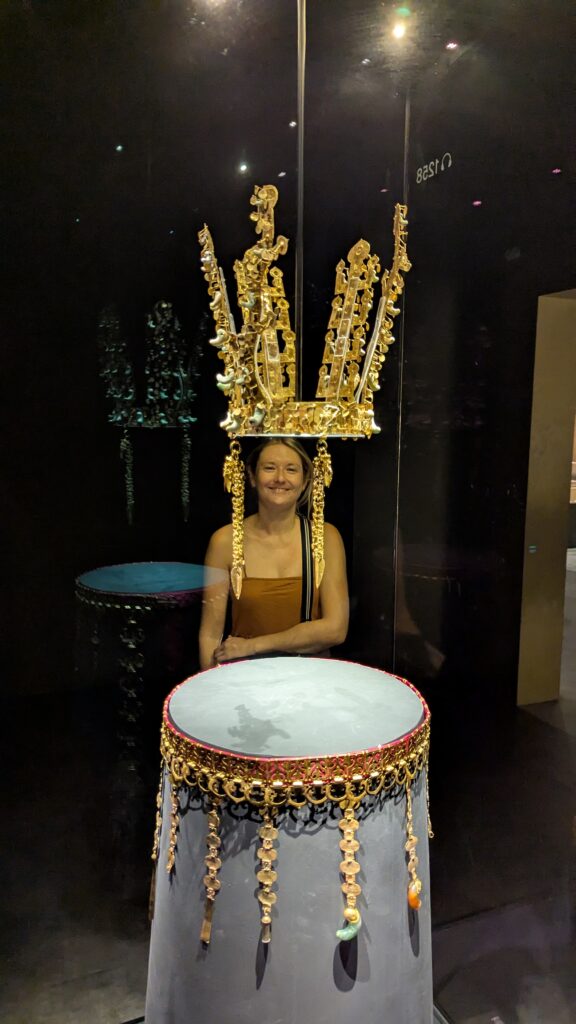

After the museum, we walked to a reconstructed bridge built using traditional techniques where an ancient bridge once stood. From there, we wandered through a traditional village filled with historic homes still in use today. One had even been turned into a little bagel shop, where we stopped for lunch and shared a very sweet garlic and cream cheese bagel. It was a bit of an odd combo, but not unpleasant!
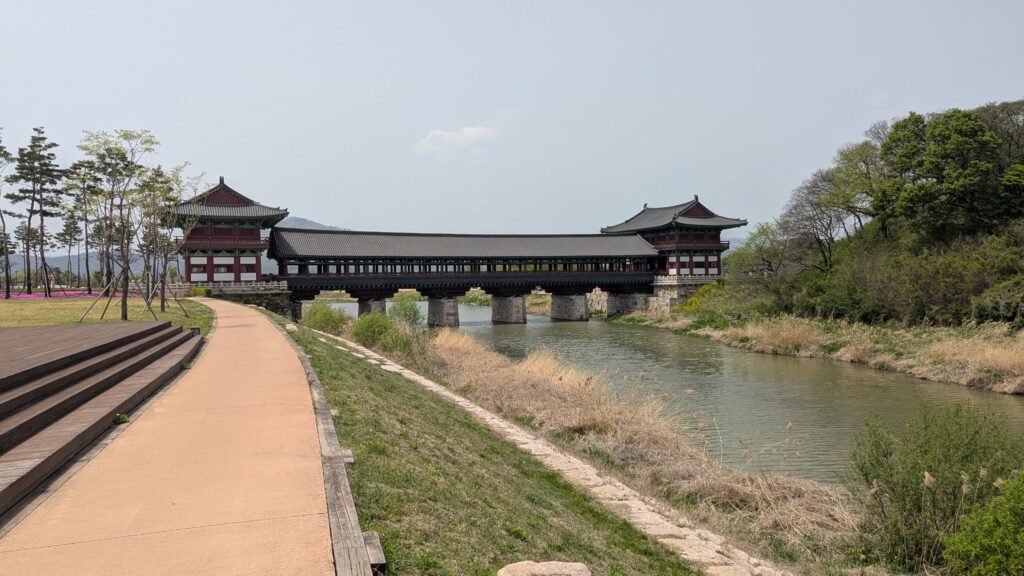
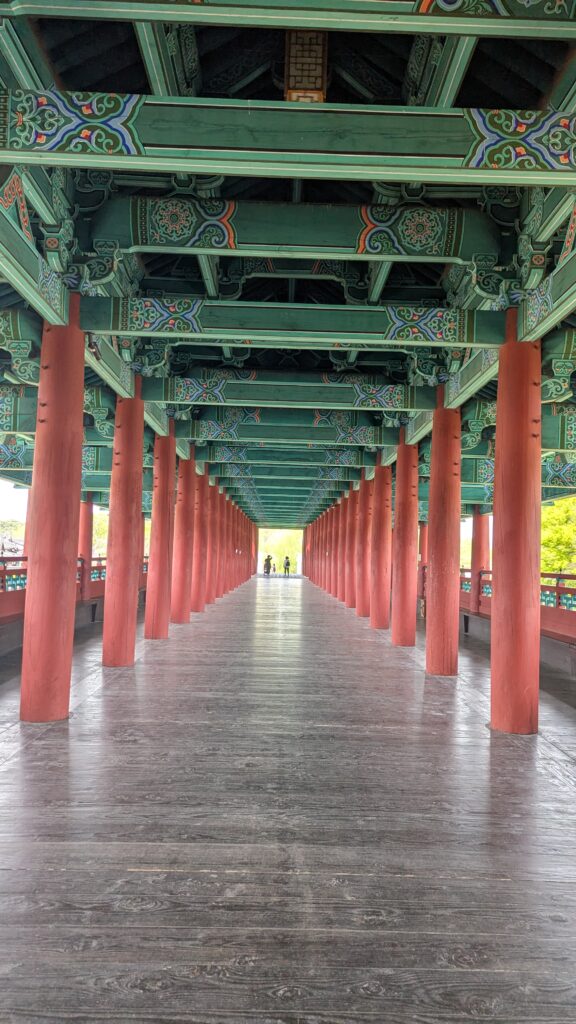
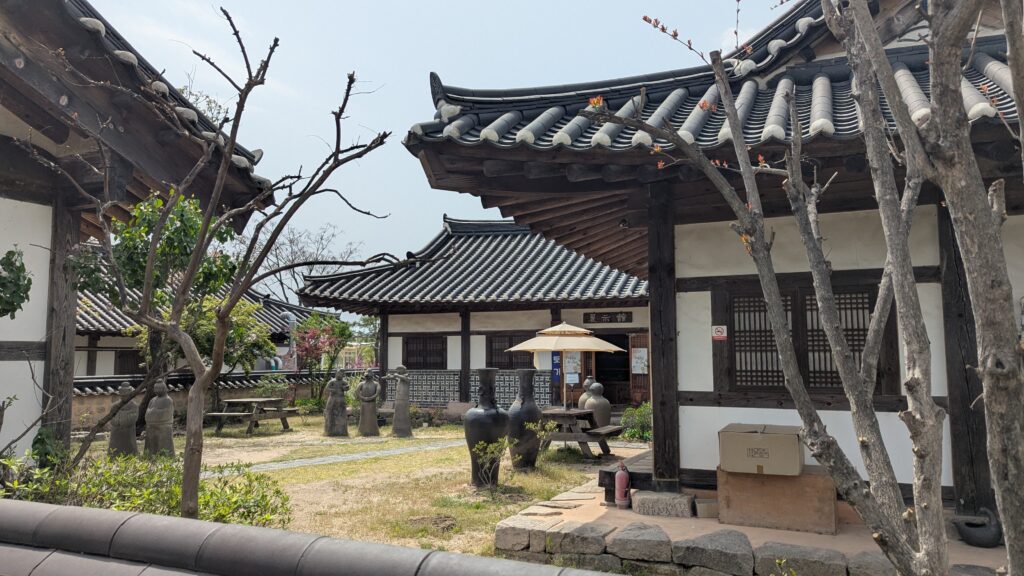
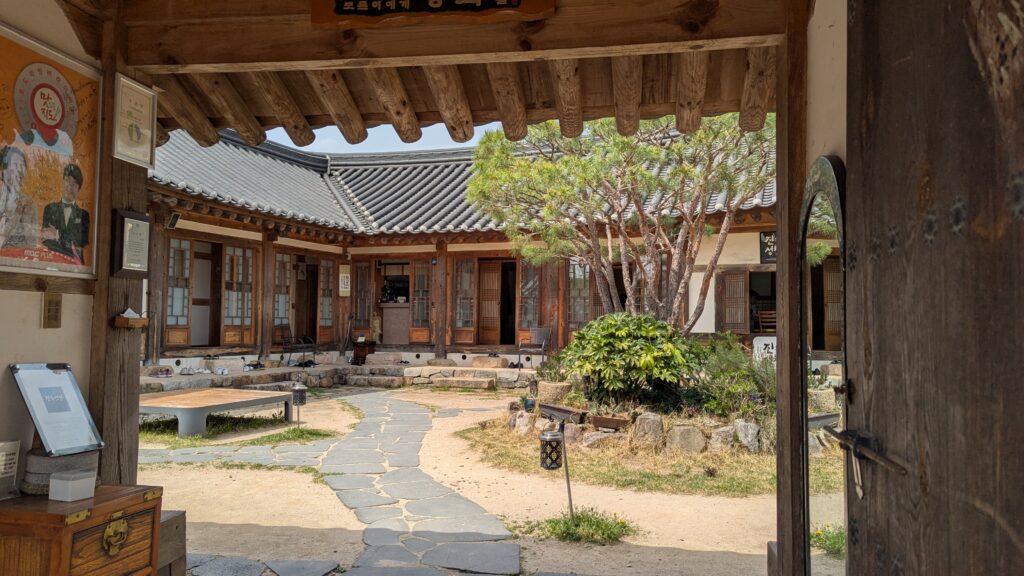
Next, we explored the royal tomb mounds—huge grassy hills where Silla kings and nobles were buried. The burial process was fascinating: a wooden chamber was built in a dug-out hole, filled with treasures, and sometimes even a sacrificed servant, then buried under stones and earth. One of the tombs has been excavated and turned into a small museum, so we went inside to see how it had been constructed.
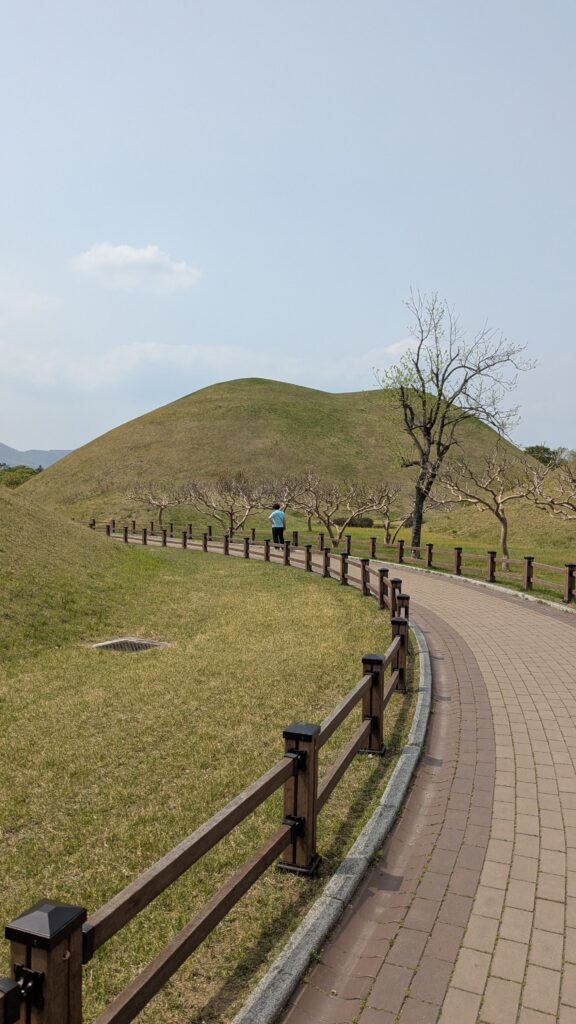

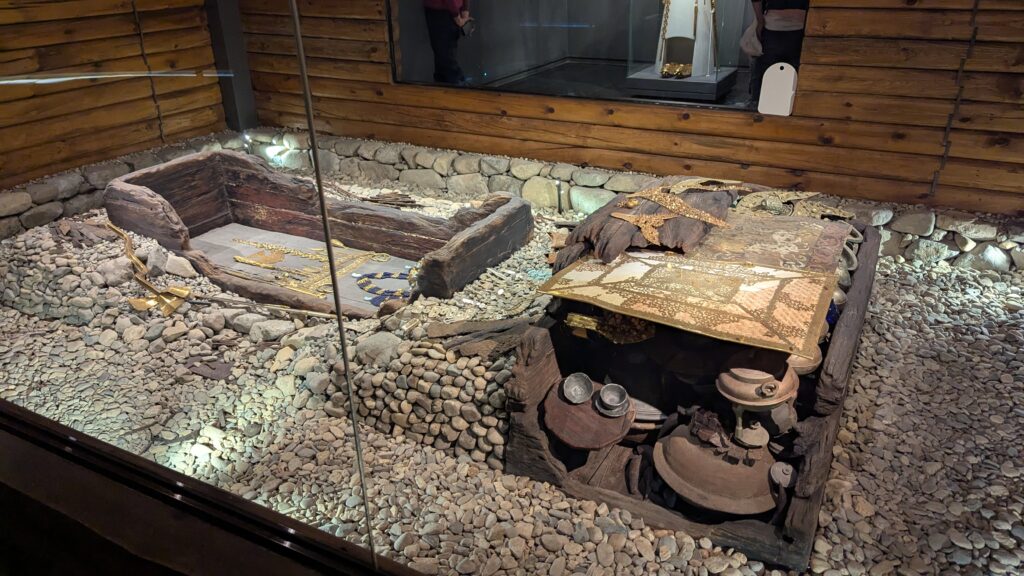
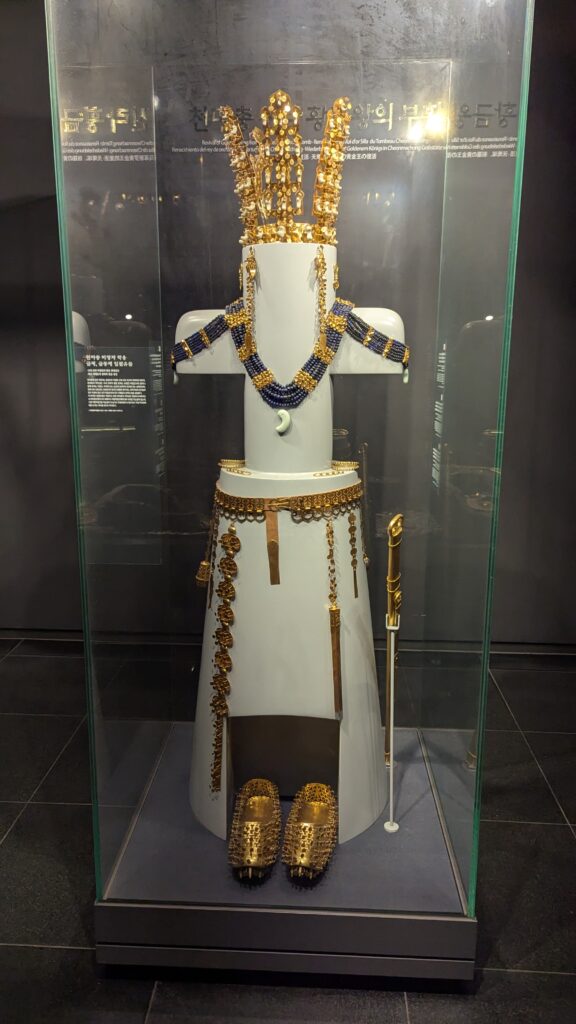
We spent the afternoon wandering through the mounds and the surrounding woodland, admiring the cherry blossoms. We saw lots of Koreans dressed in traditional hanbok taking photos.
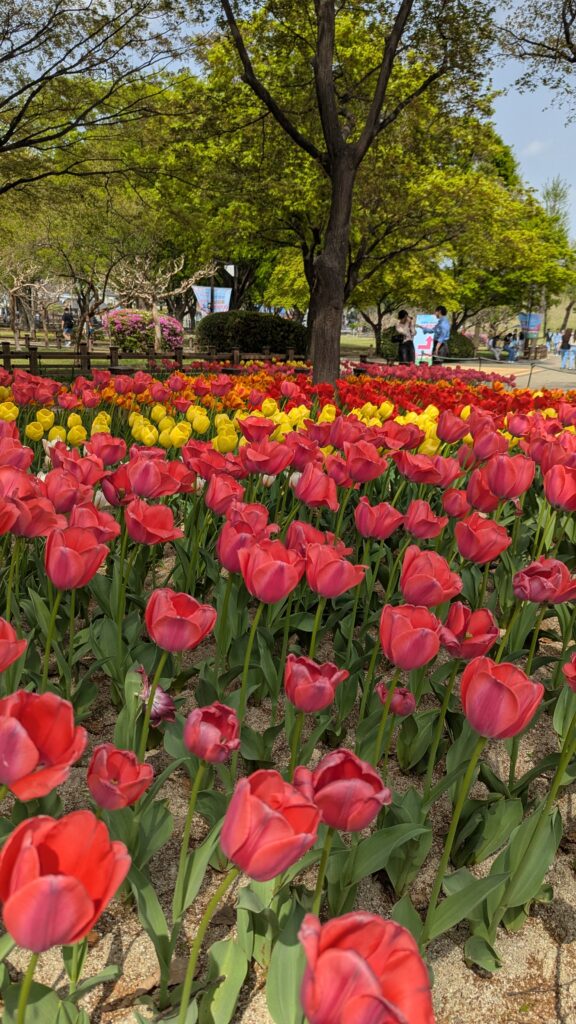

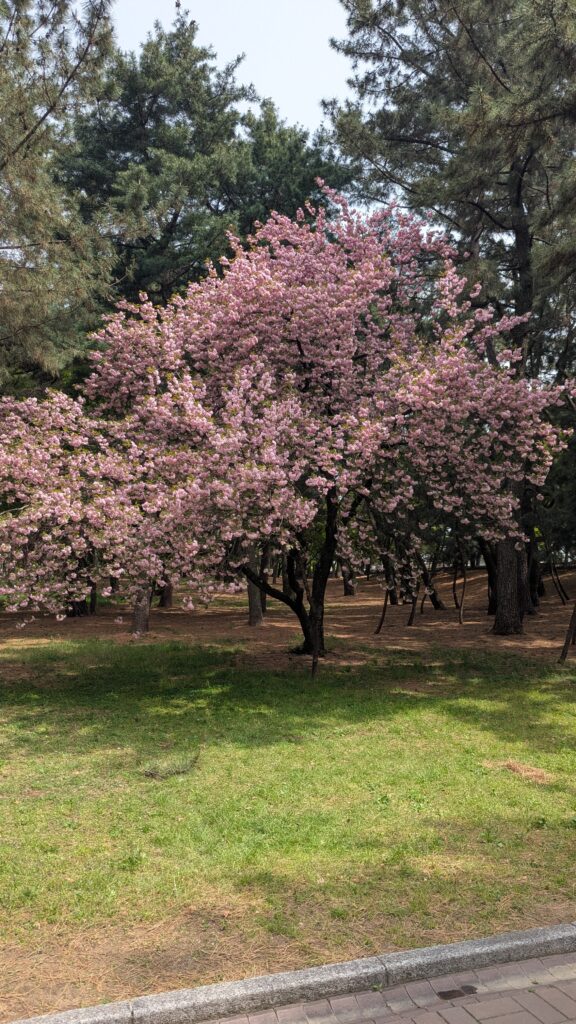
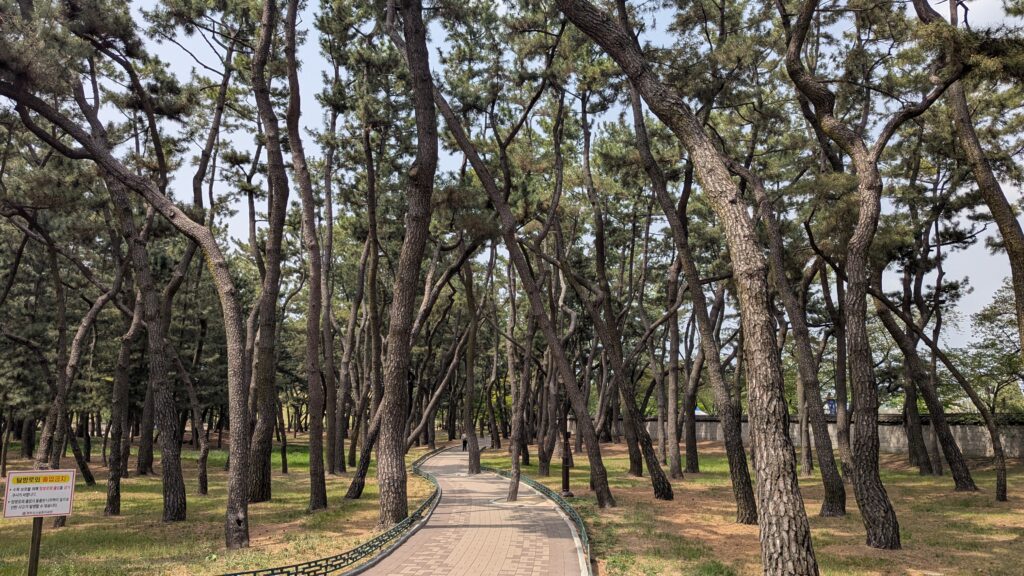
While we were watching one family’s photoshoot, some older women helping with the outfits started chatting to us, and the husband of the family translated—they wanted *us* to dress up too. Apparently, it was a free service, so we gave it a go. They dressed us in beautiful gowns, and then one of the women took charge of our photoshoot—marching us around, posing us, and making sure we smiled *a lot*. If we didn’t show enough teeth, she shouted at us in Korean, so we quickly got the hang of it! It was such a funny and wholesome experience, and they were so pleased when we thanked them in Korean afterwards.
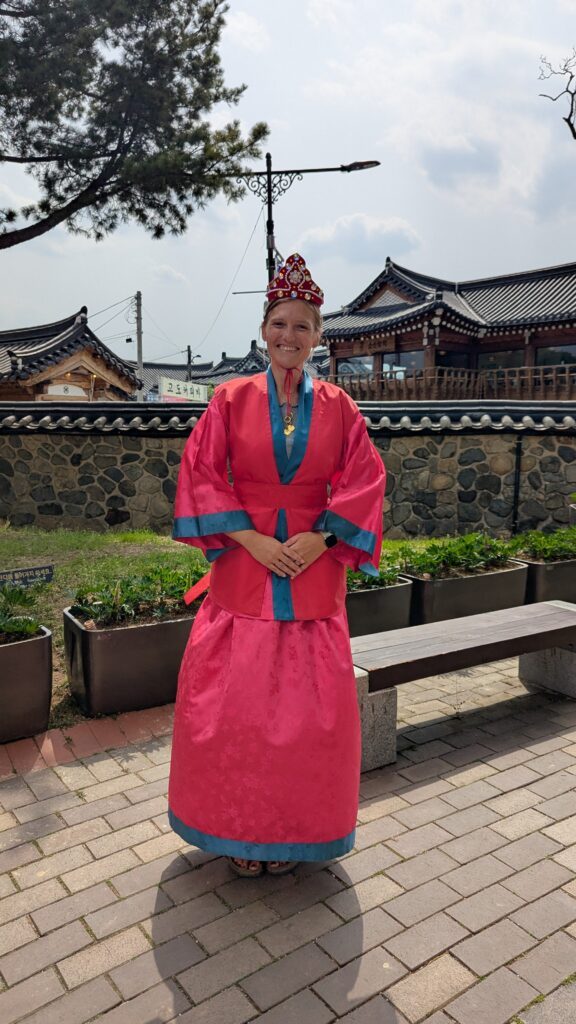
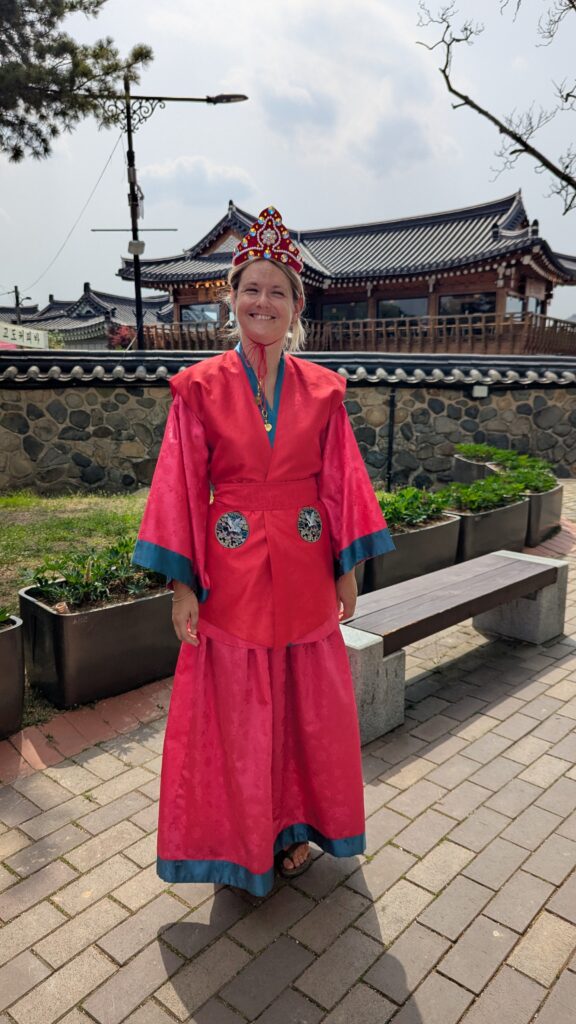
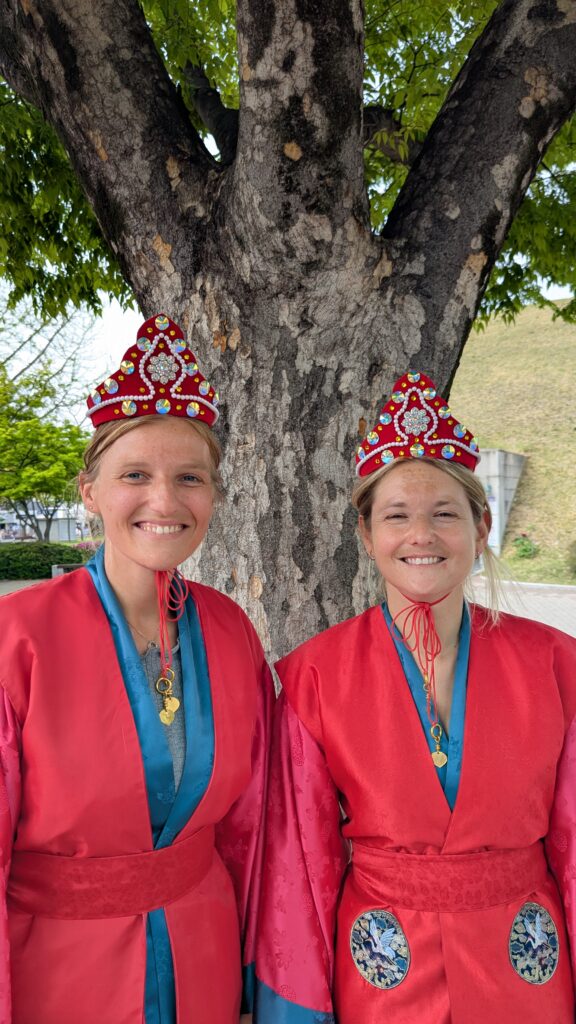
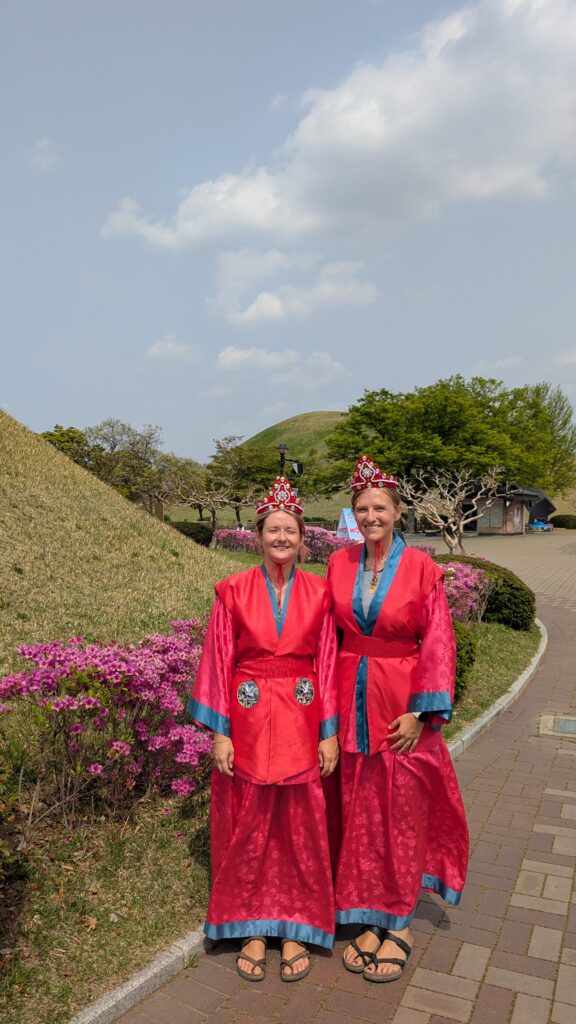

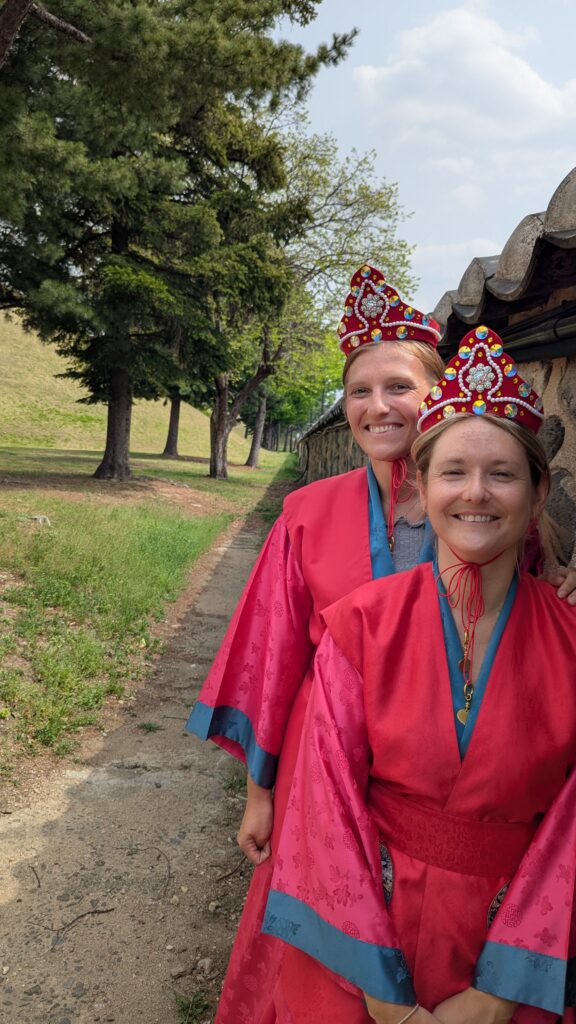
That evening we went out for sushi—my favourite! I even convinced Grace to try my favourite spicy tuna rolls. She said they weren’t too bad, which is very high praise considering she usually avoids anything fishy or seaweed-y. I loved them so much I ordered a second round and ended up waddling home, completely stuffed.
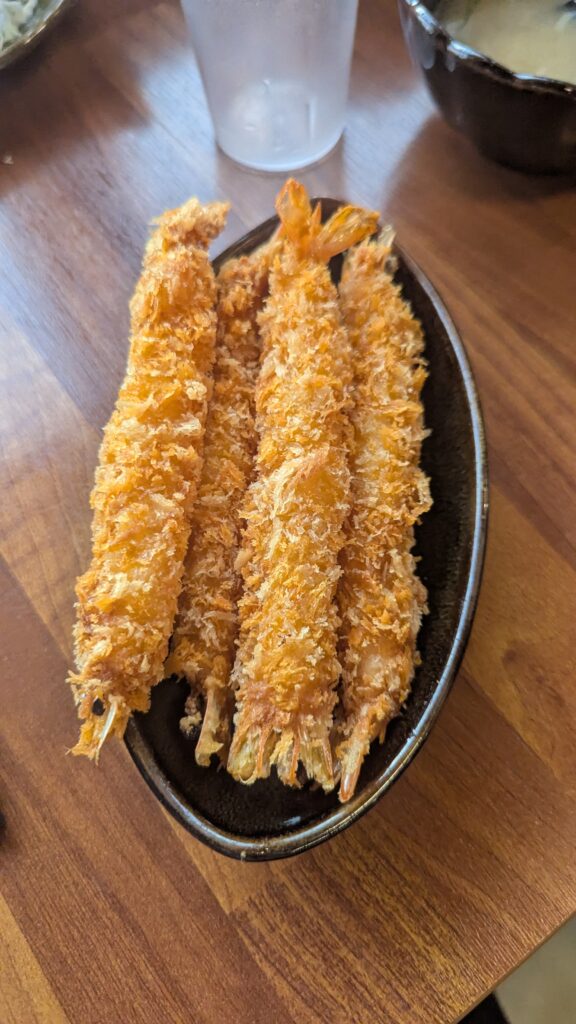
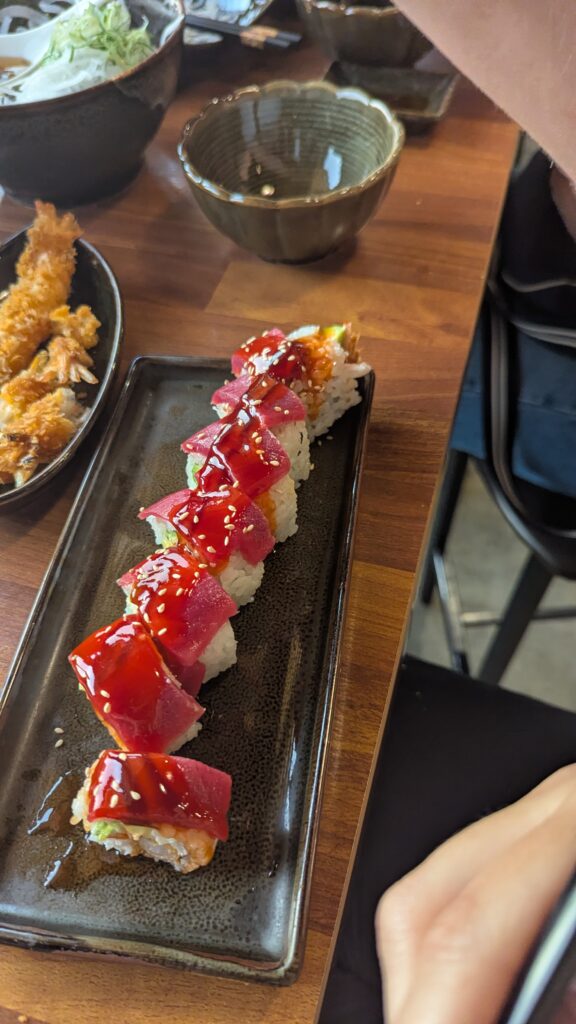
On the way back, Grace stopped for an ice cream at a convenience store and I tried one of the fun lemonade drinks you can get here—you buy a cup of ice and then choose a flavour pouch to mix into it. I went for a peach lemonade and it was really good.
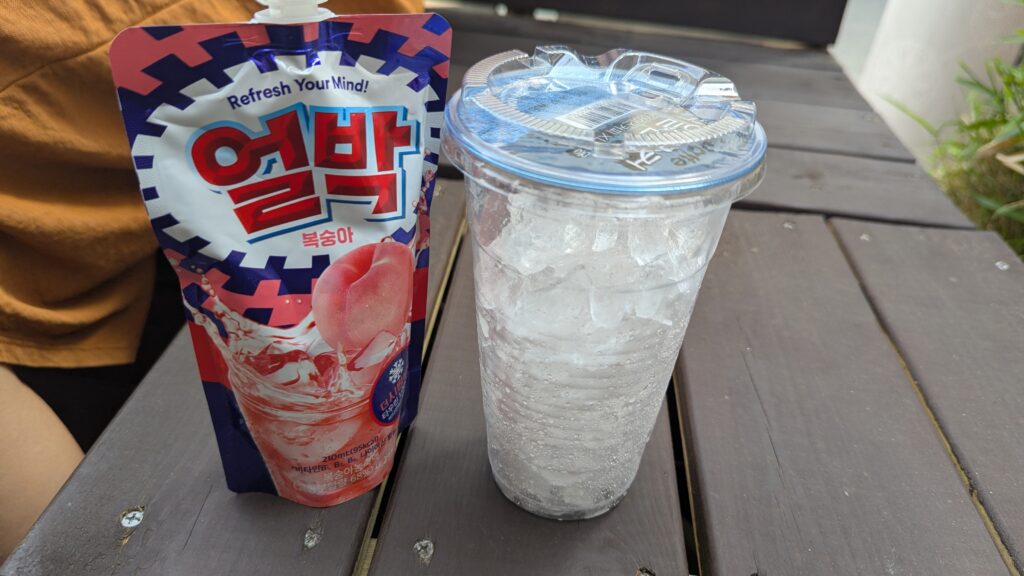
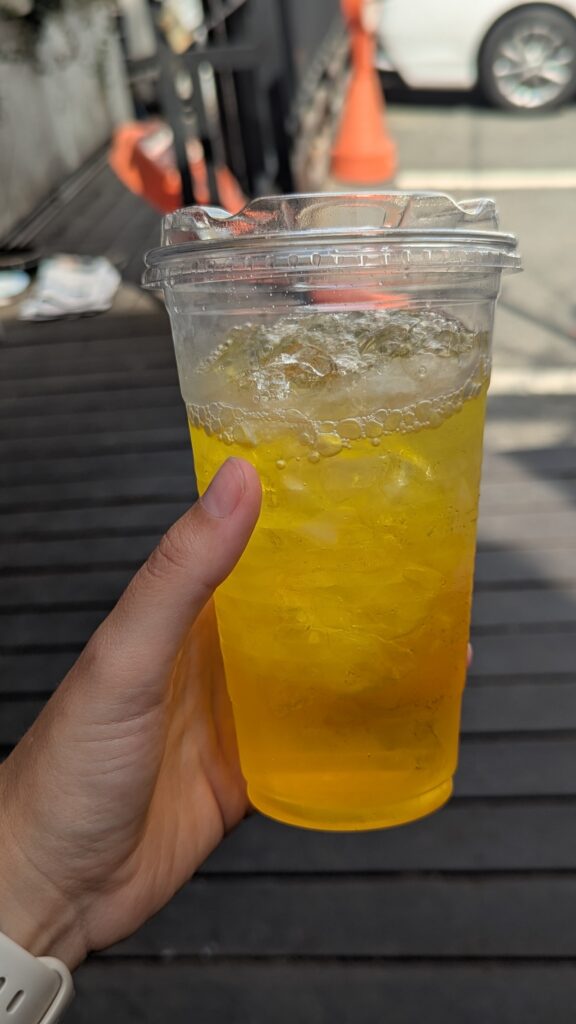
Back at the hostel, we met a Korean man in his early 40s who’d just checked into our room. We ended up chatting for a while using Google Translate. He told us he lived in Busan but had come to Gyeongju to visit the graves of his father and grandfather. He was so sweet and curious about what we thought of Korea, asking all about our trip so far. We reassured him that we were absolutely loving it.
Next stop: Jeonju! I’ll write again soon.
Love, Alice x
